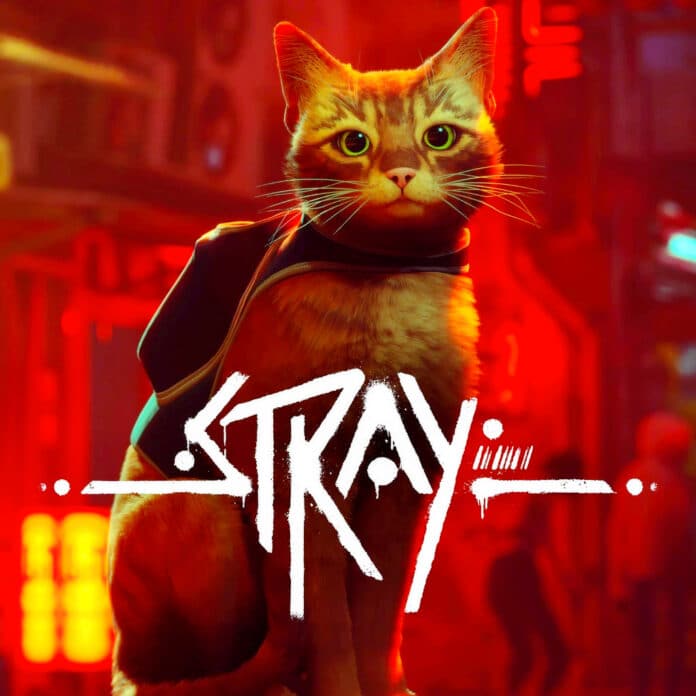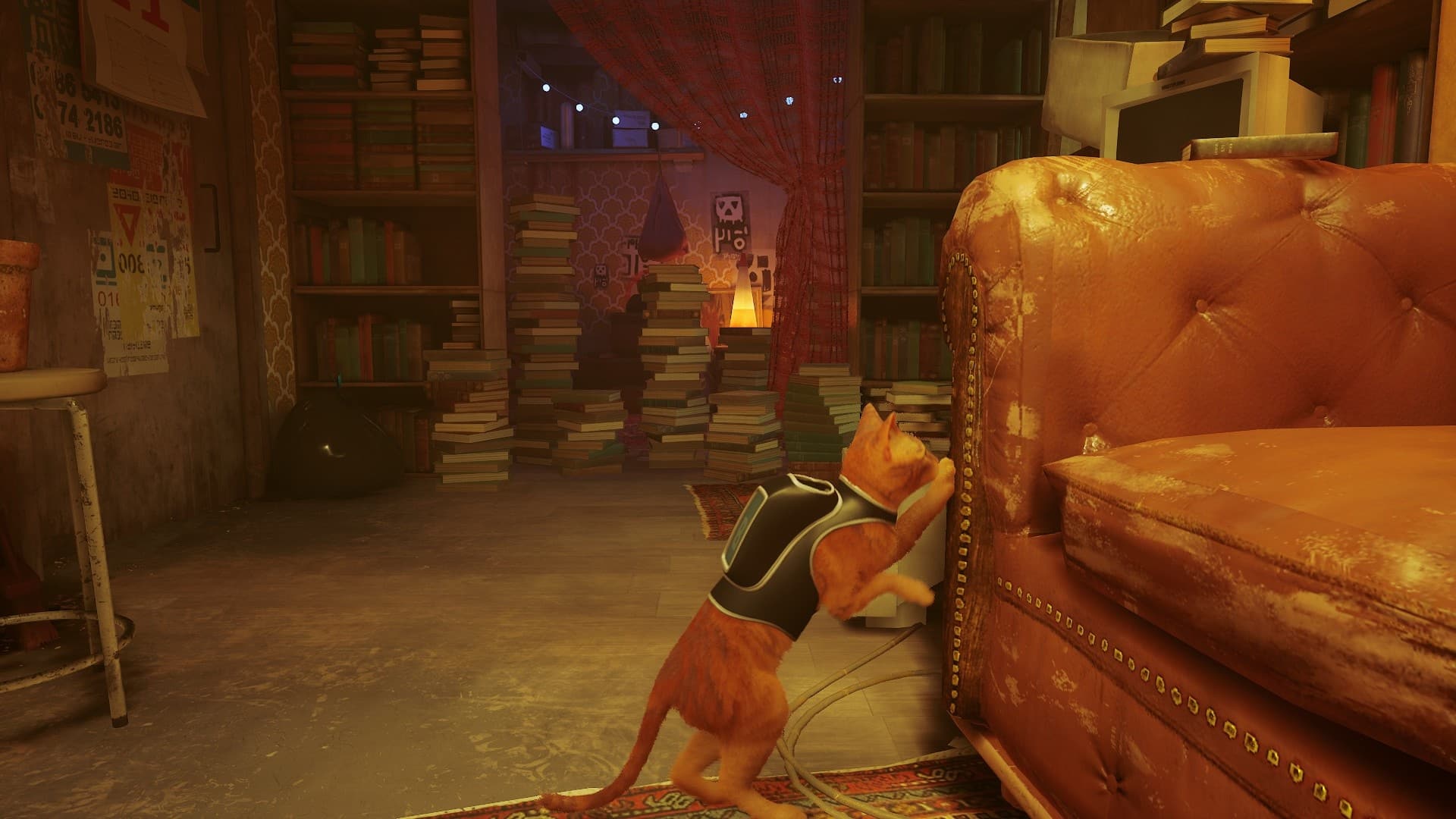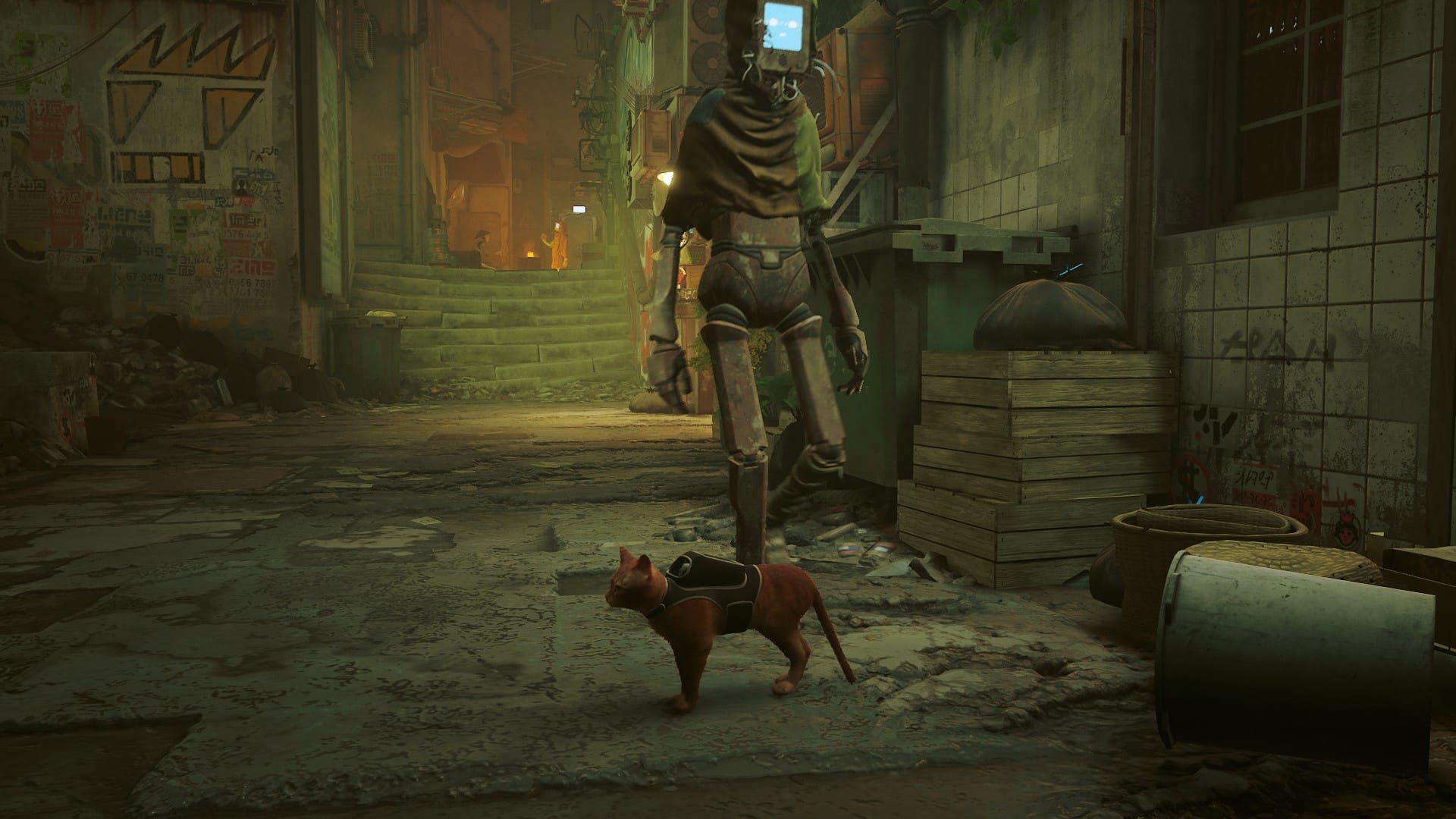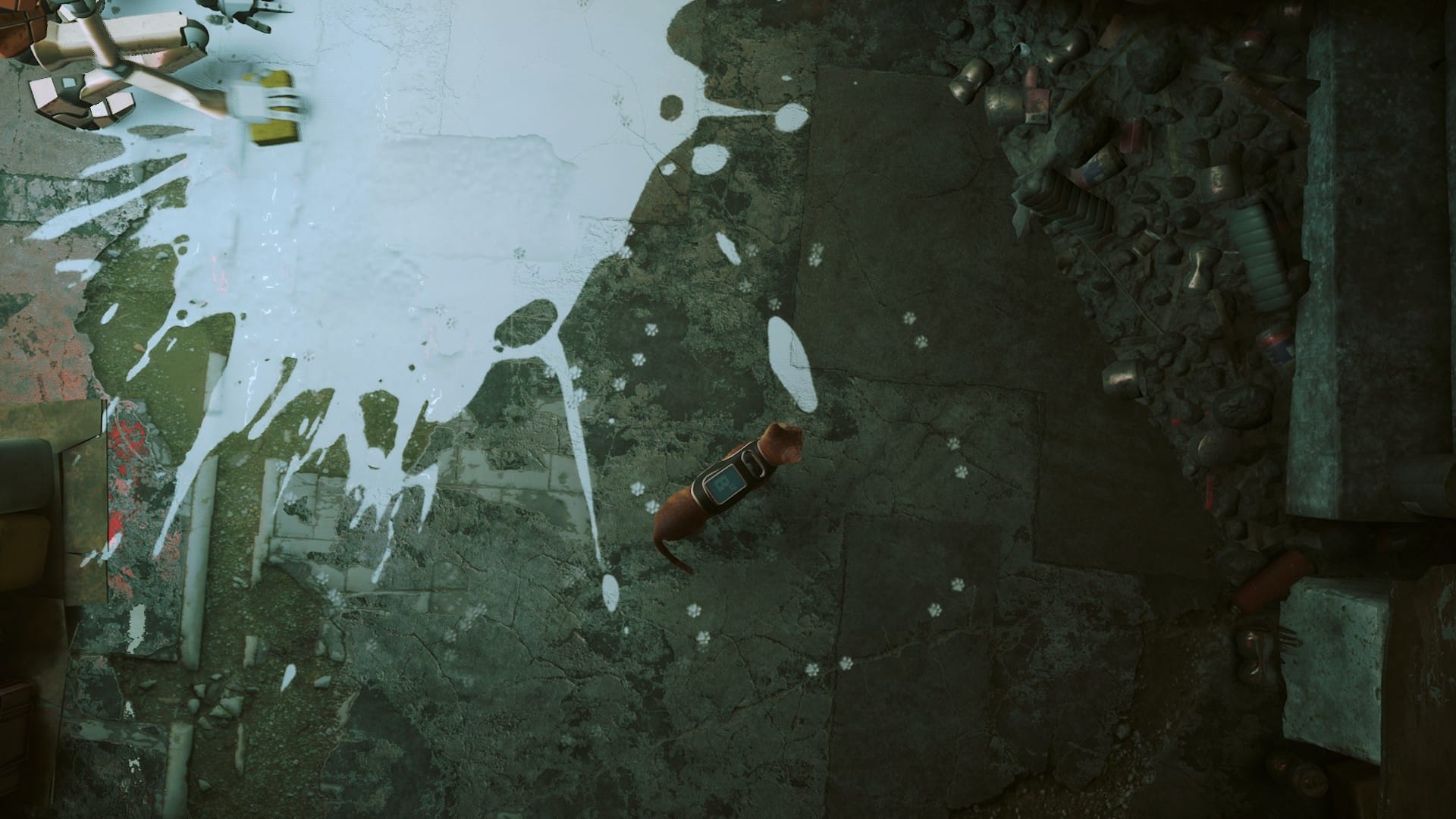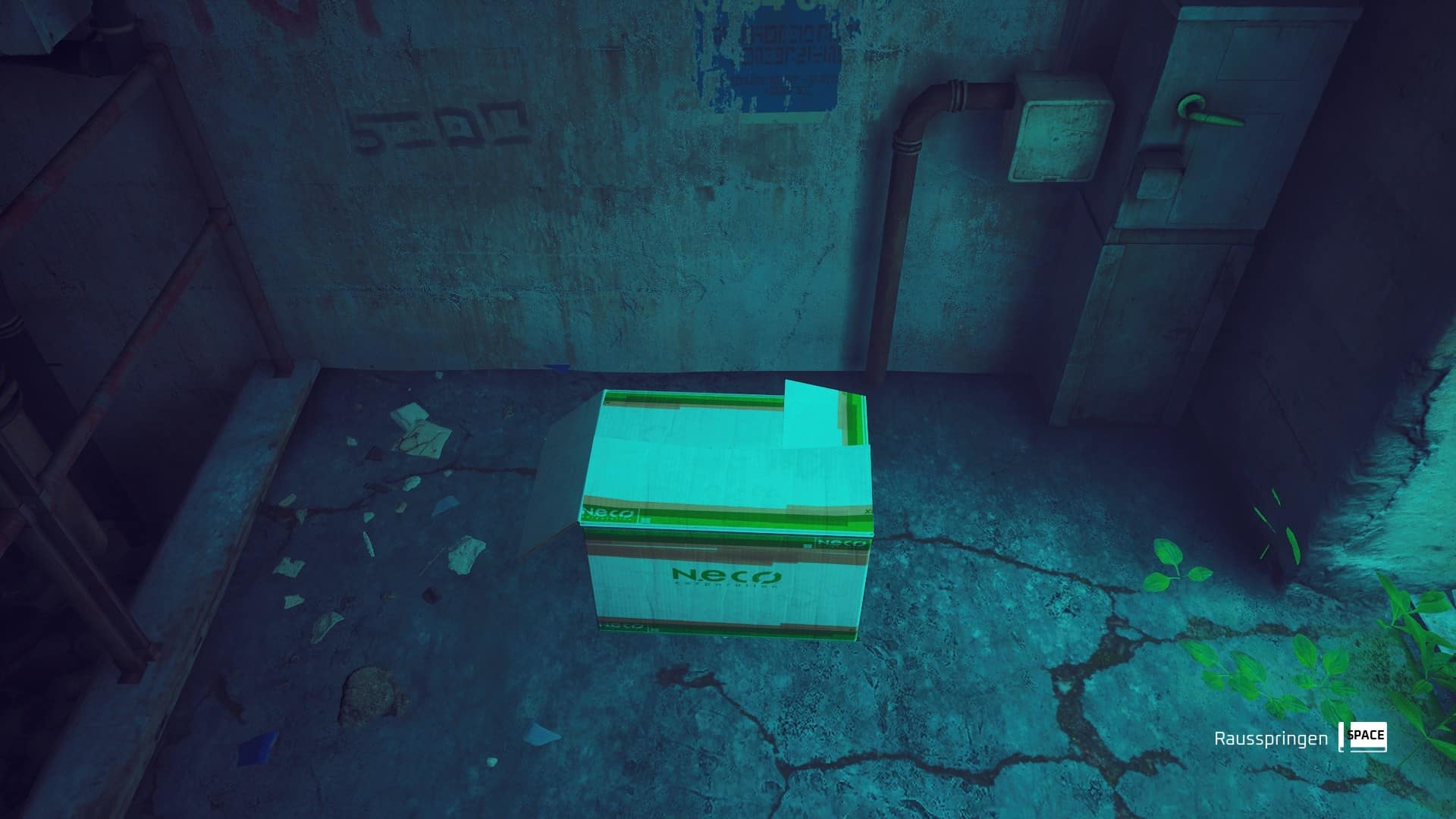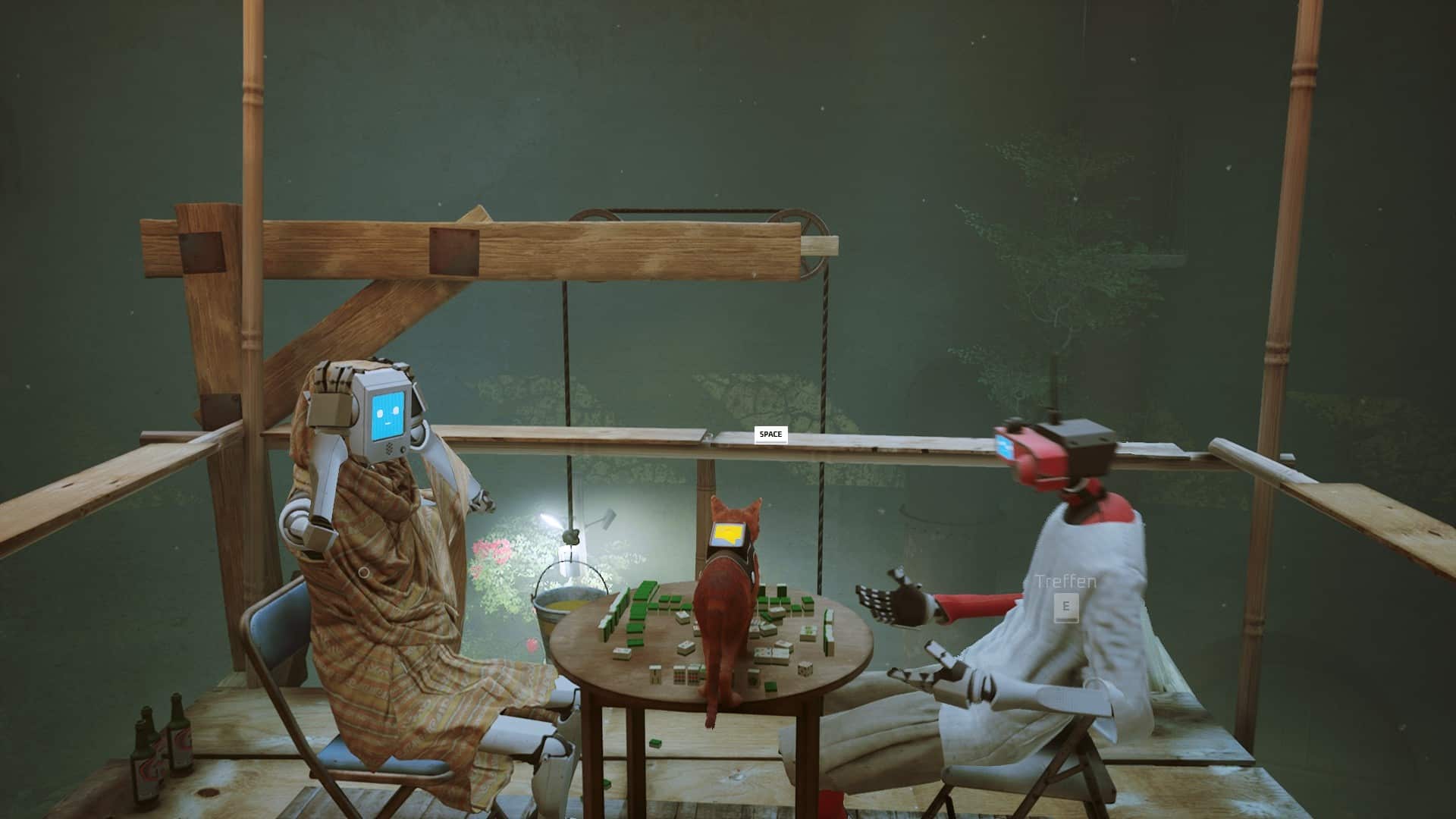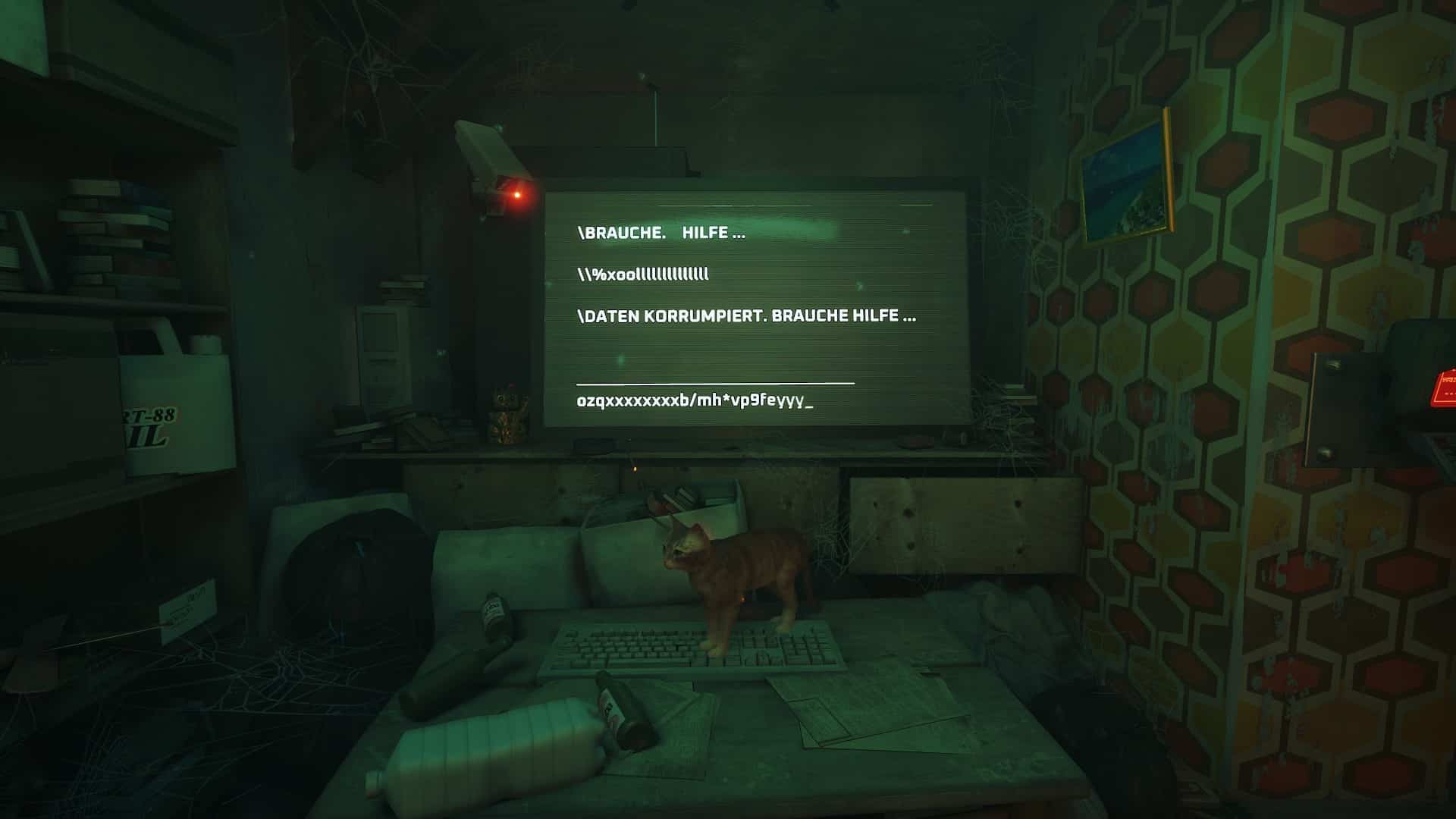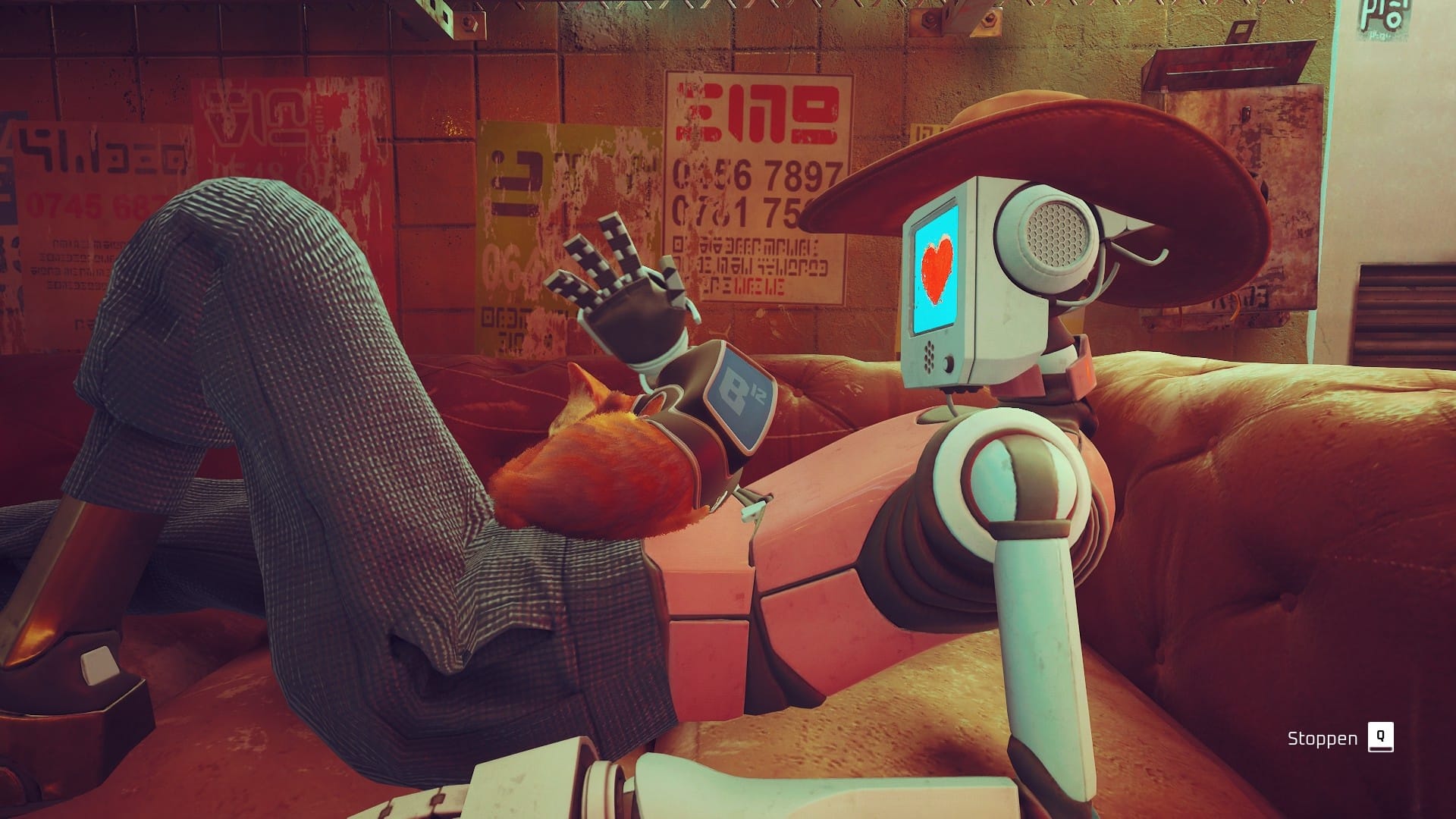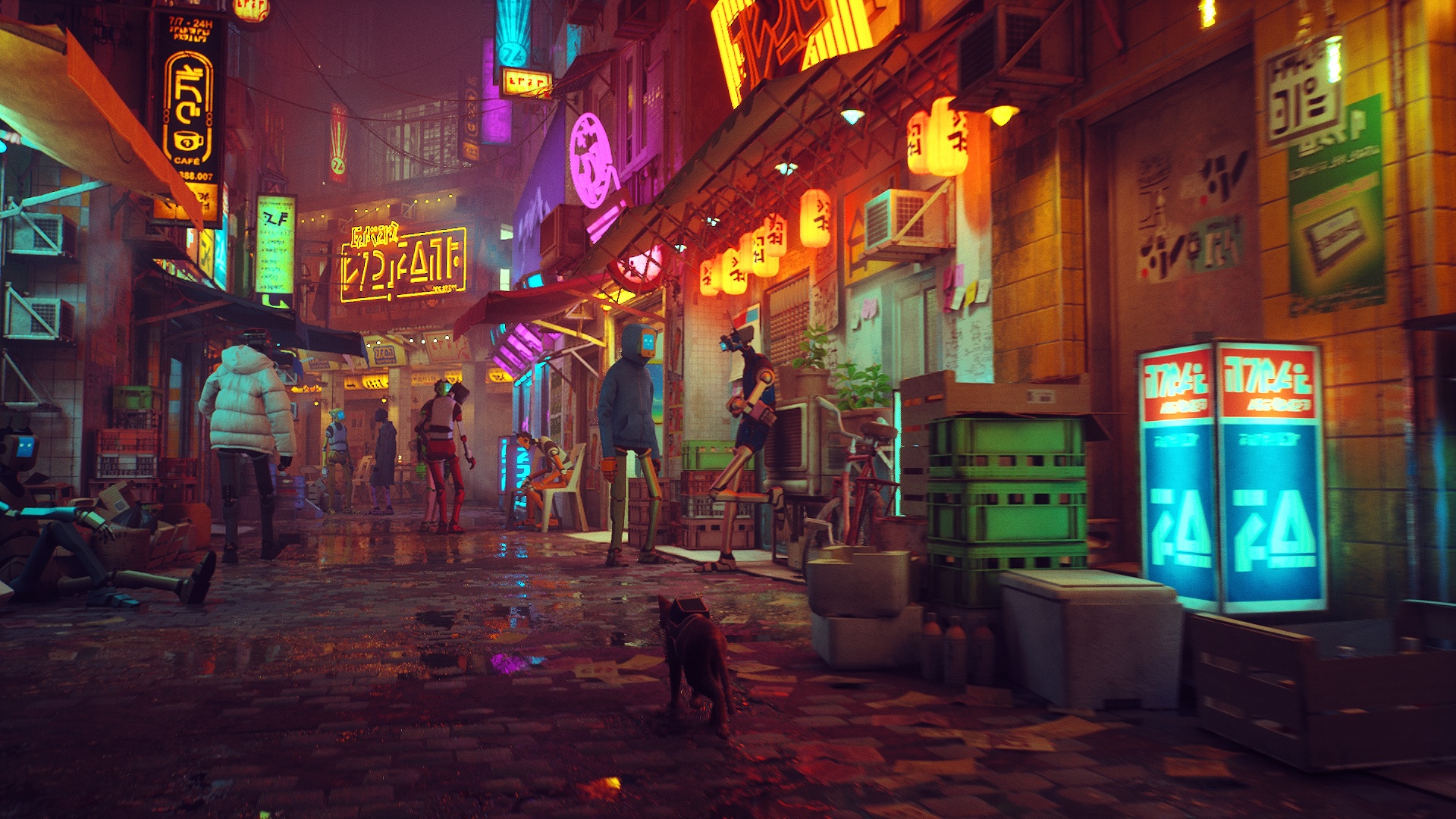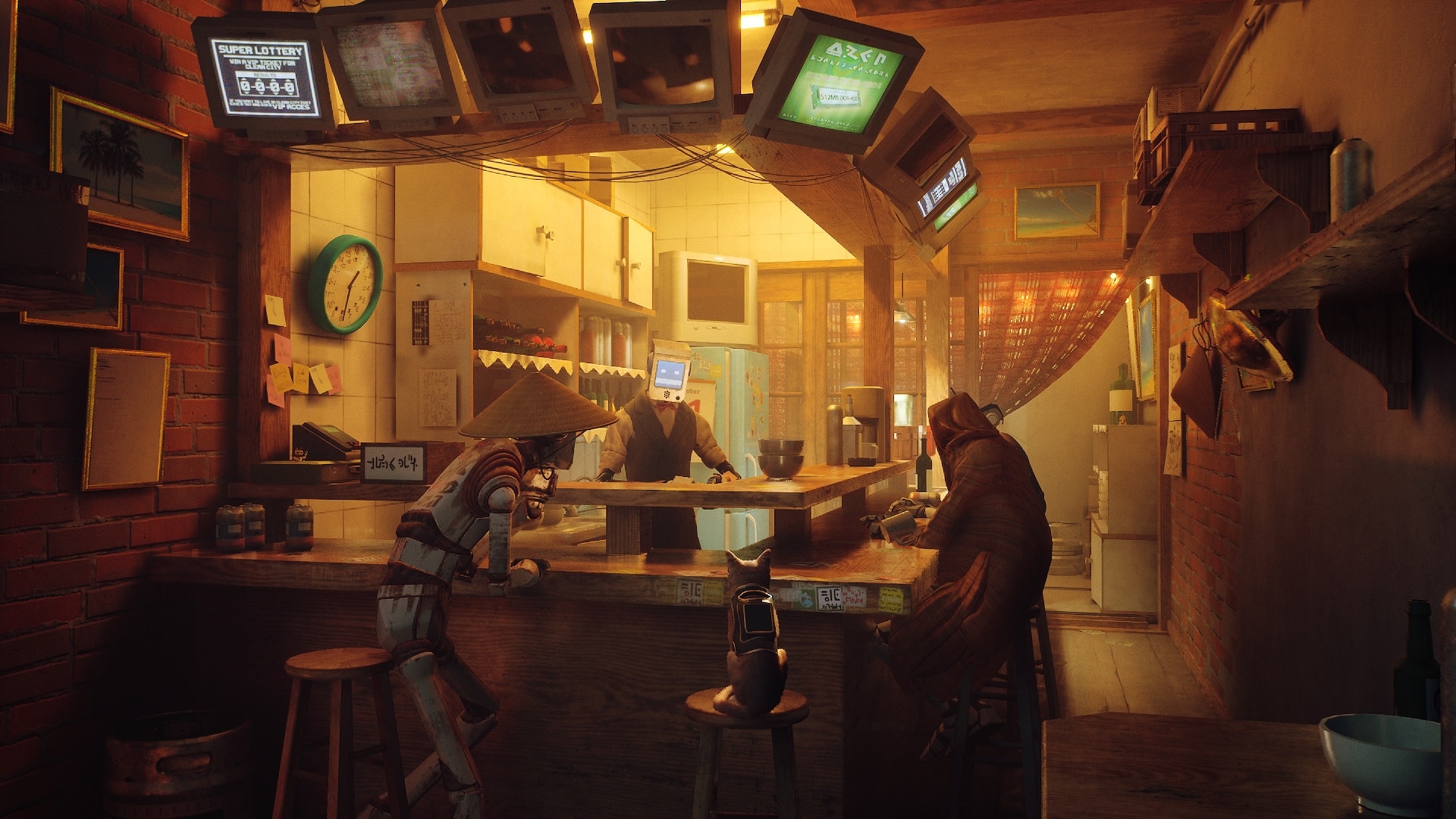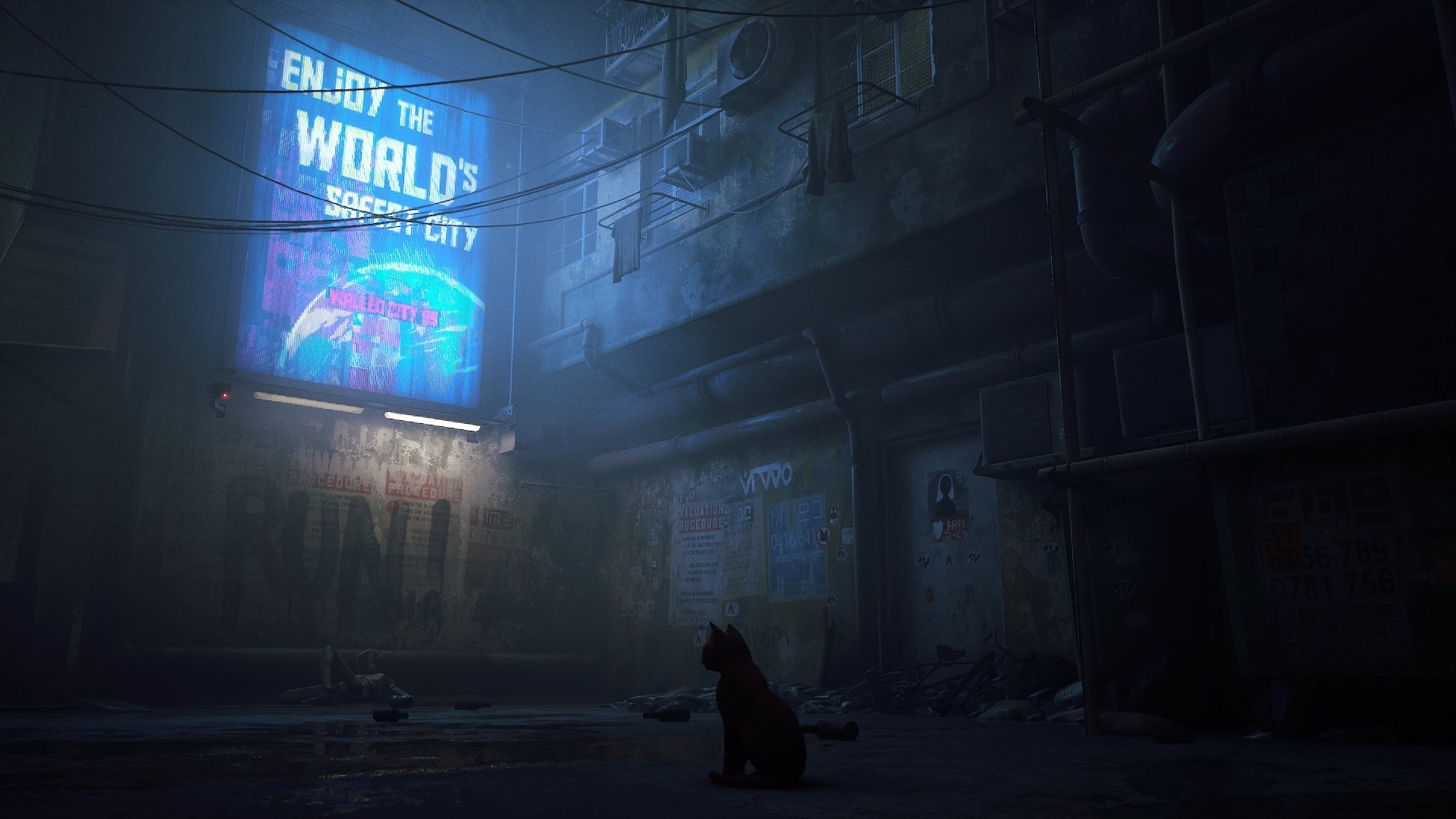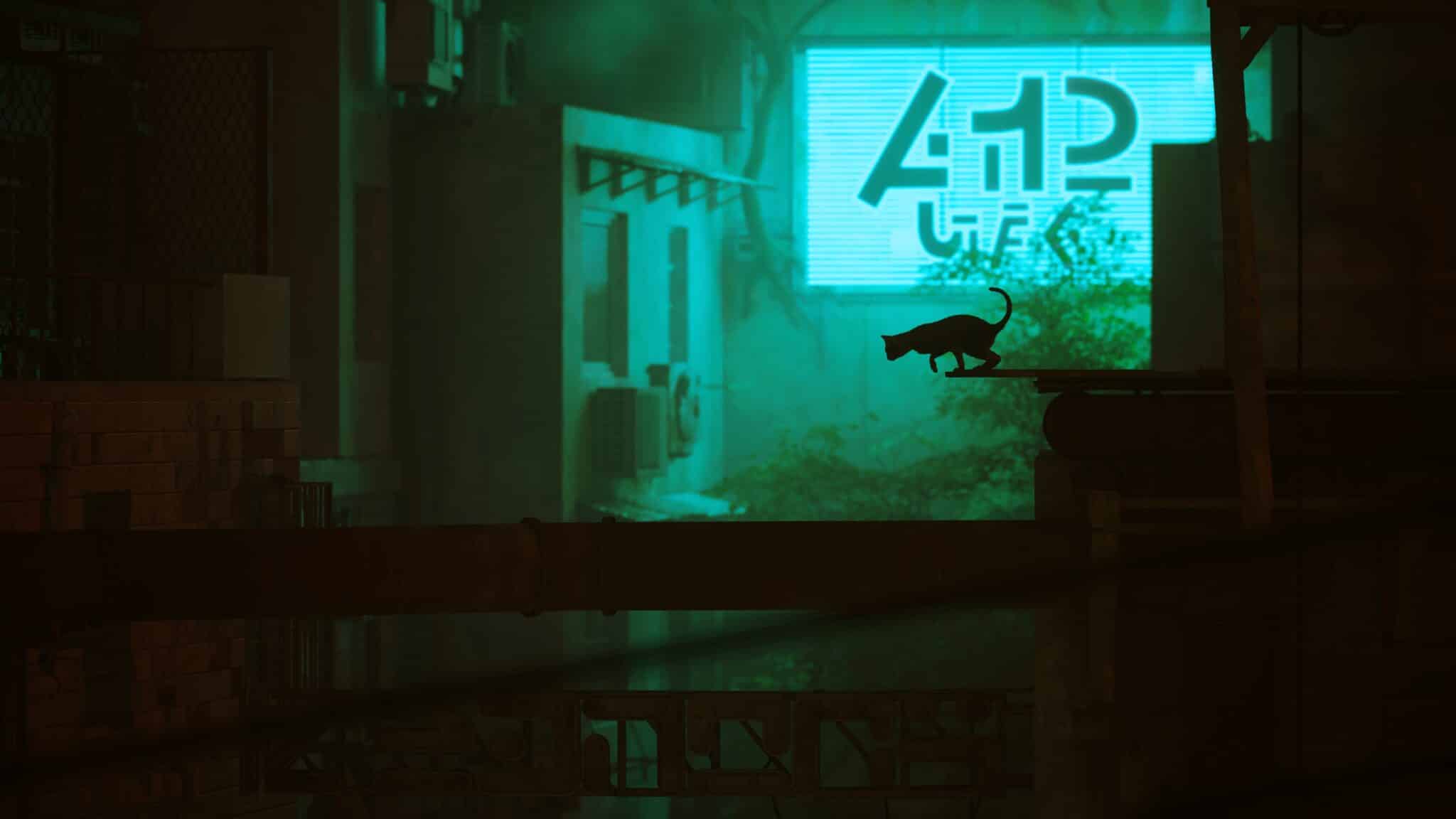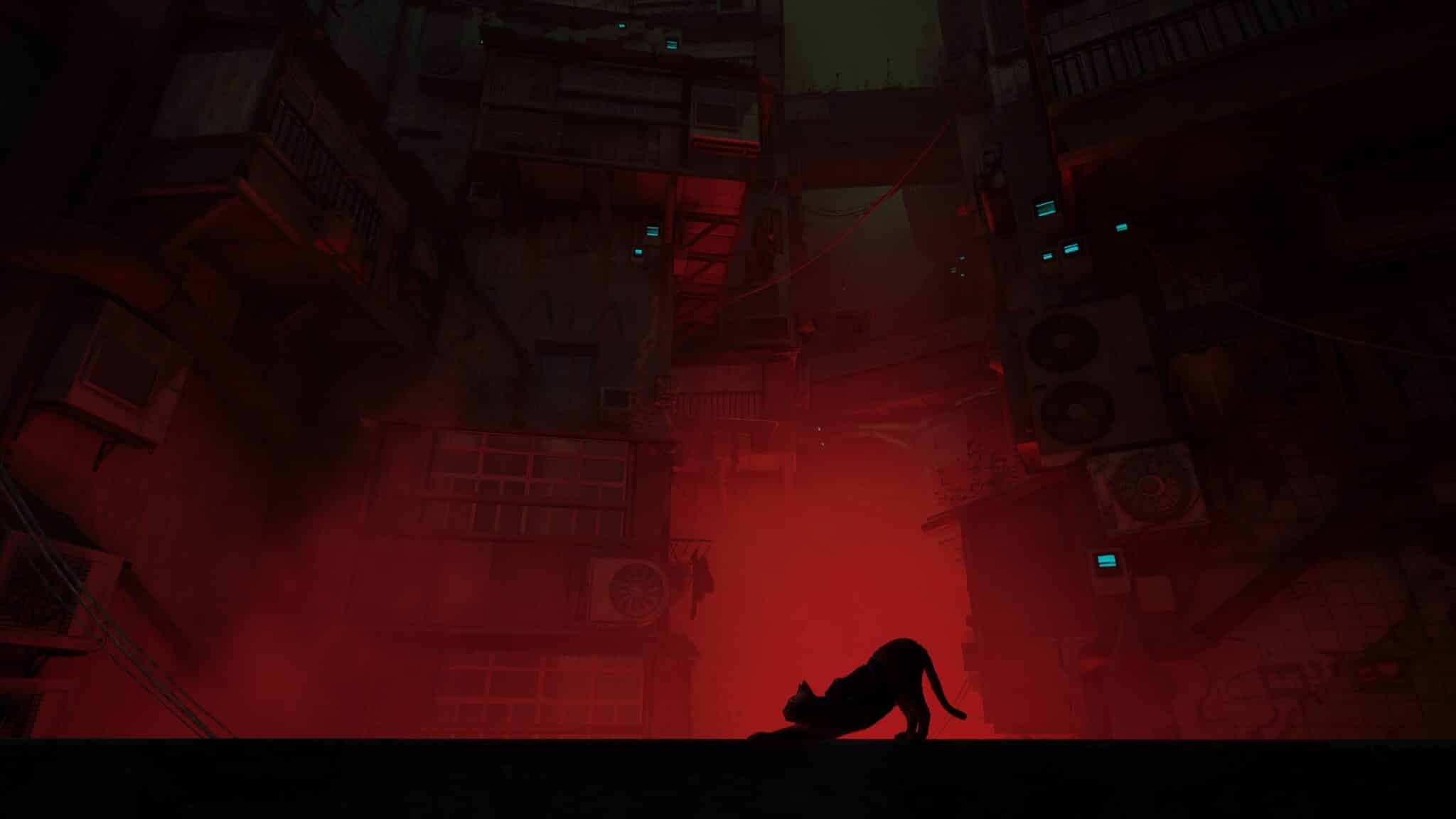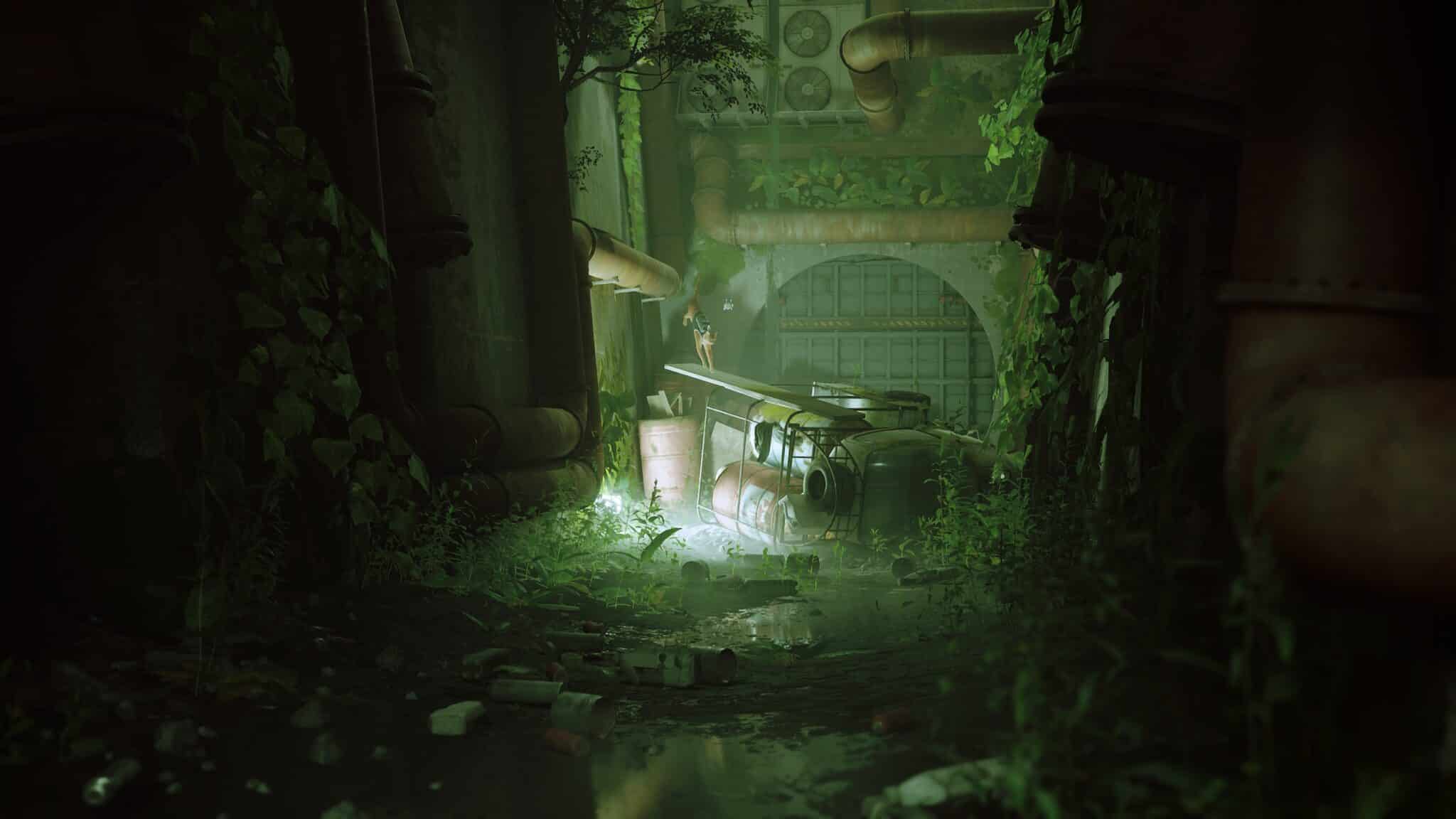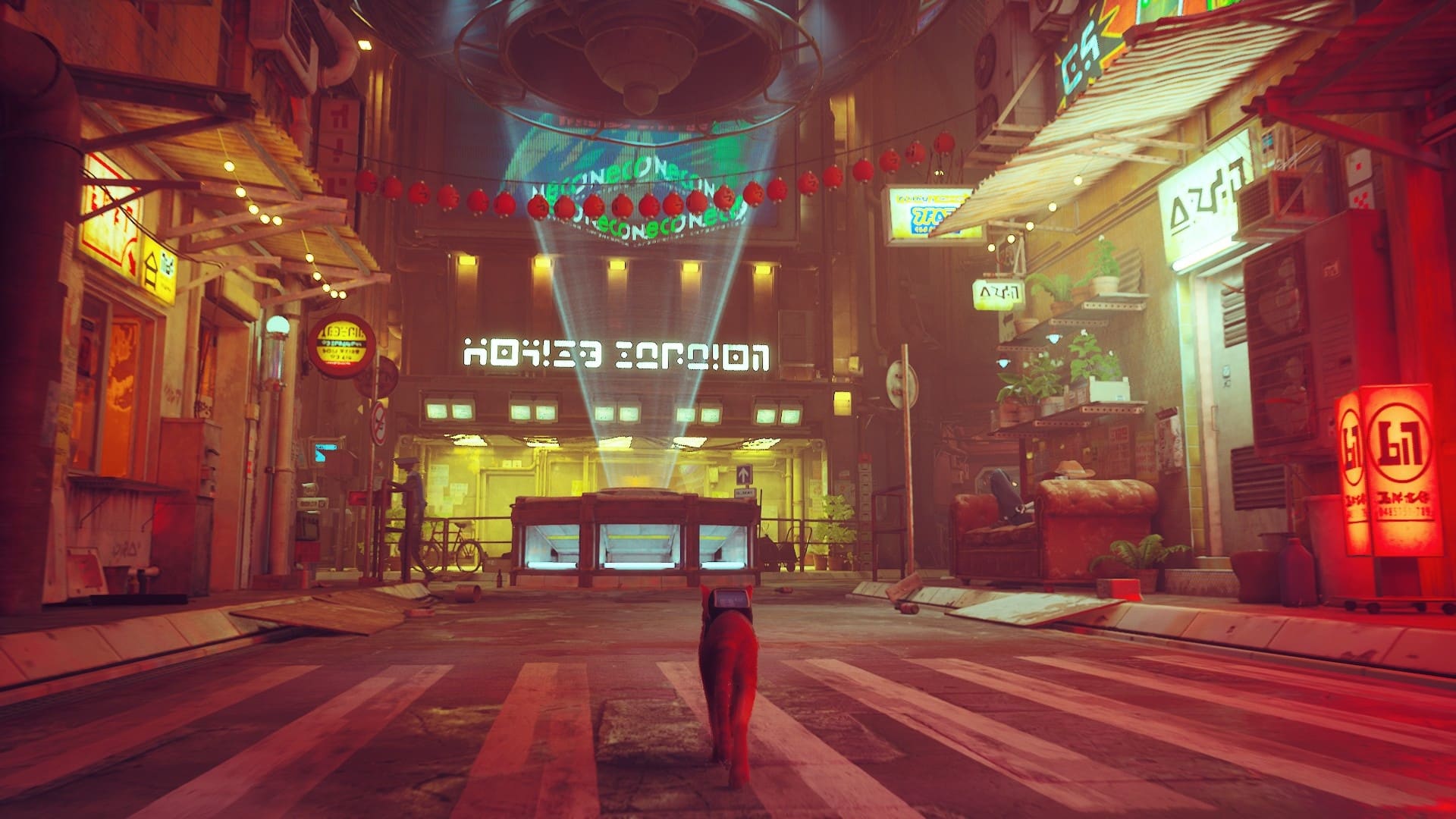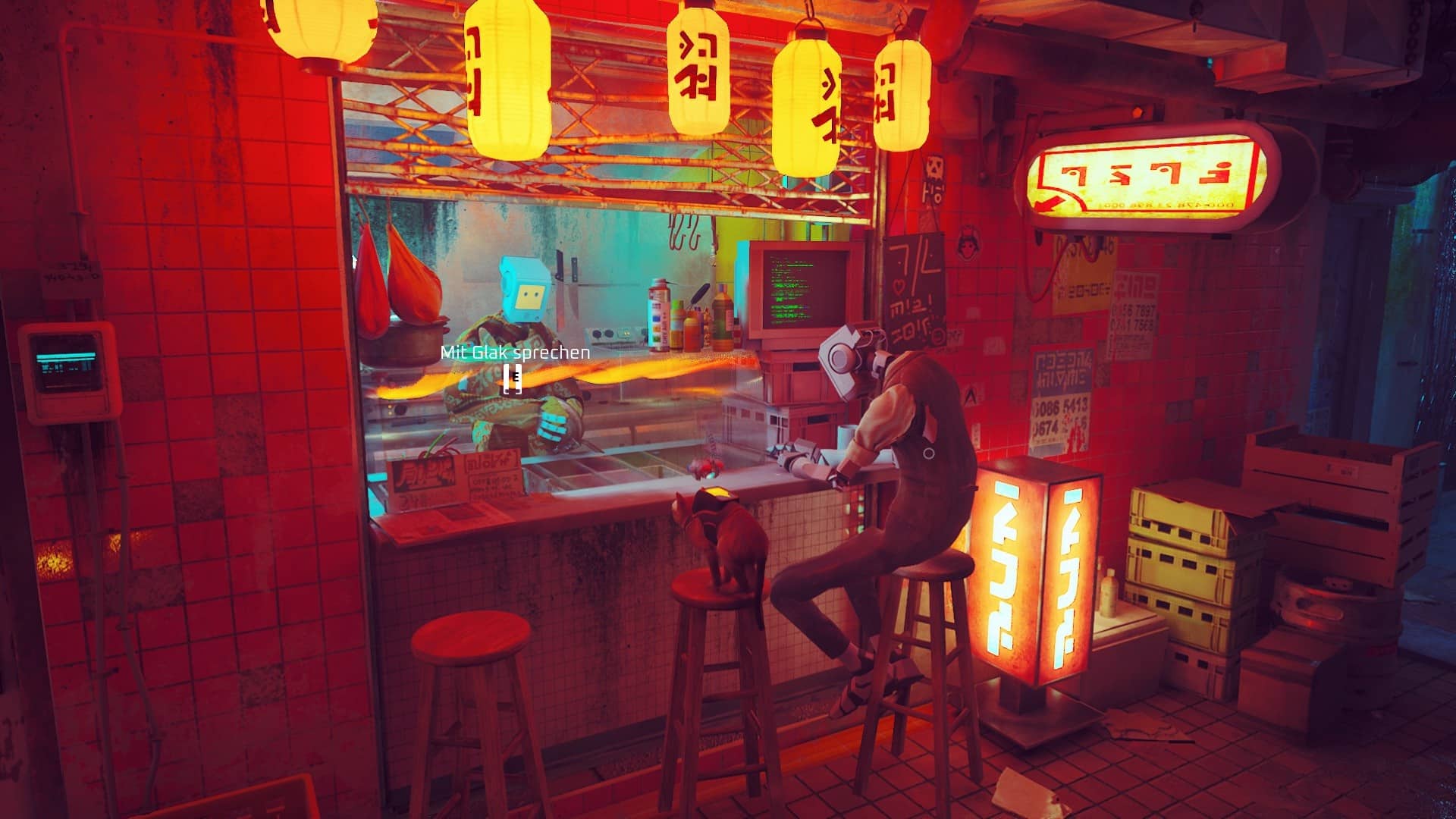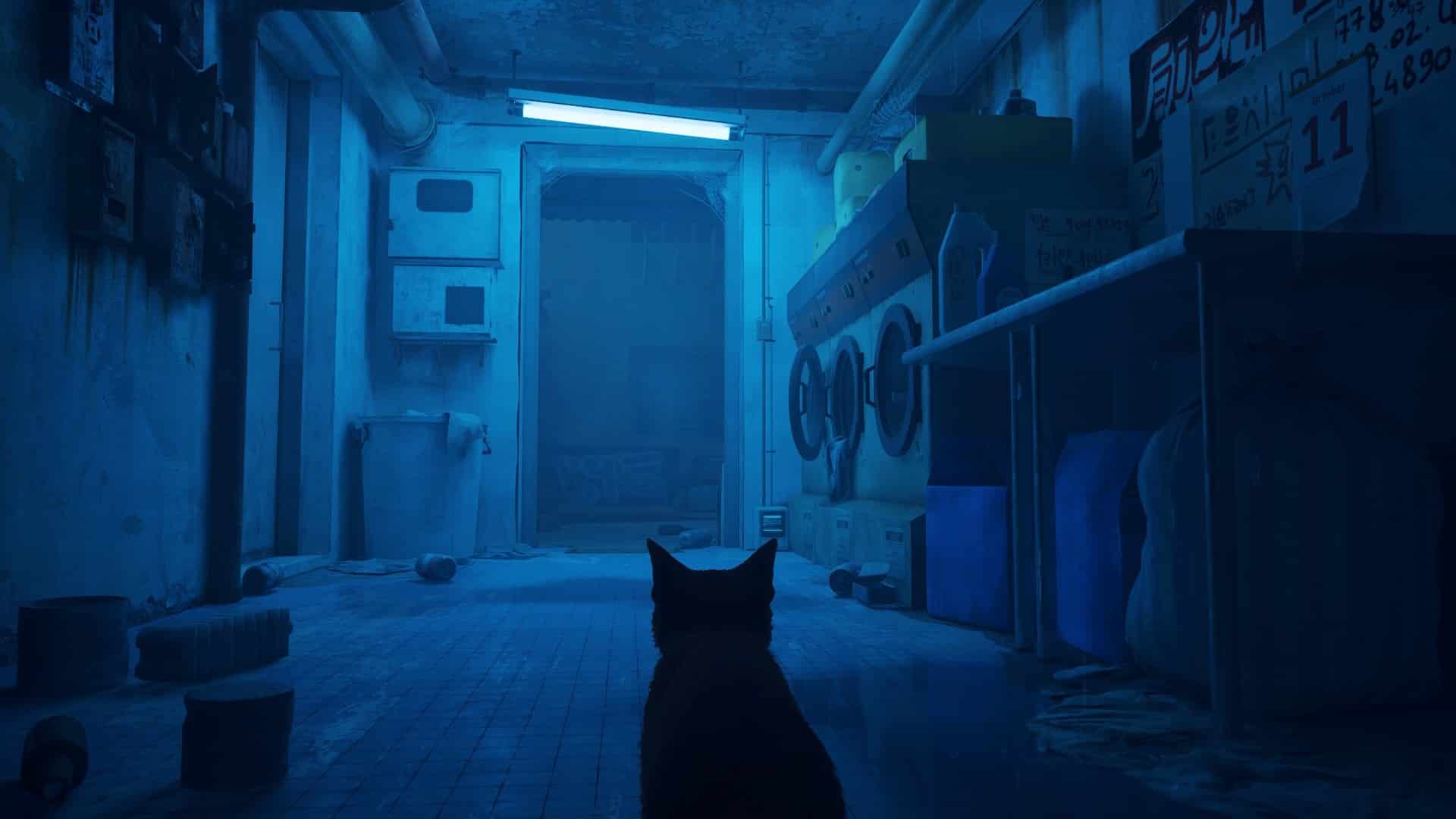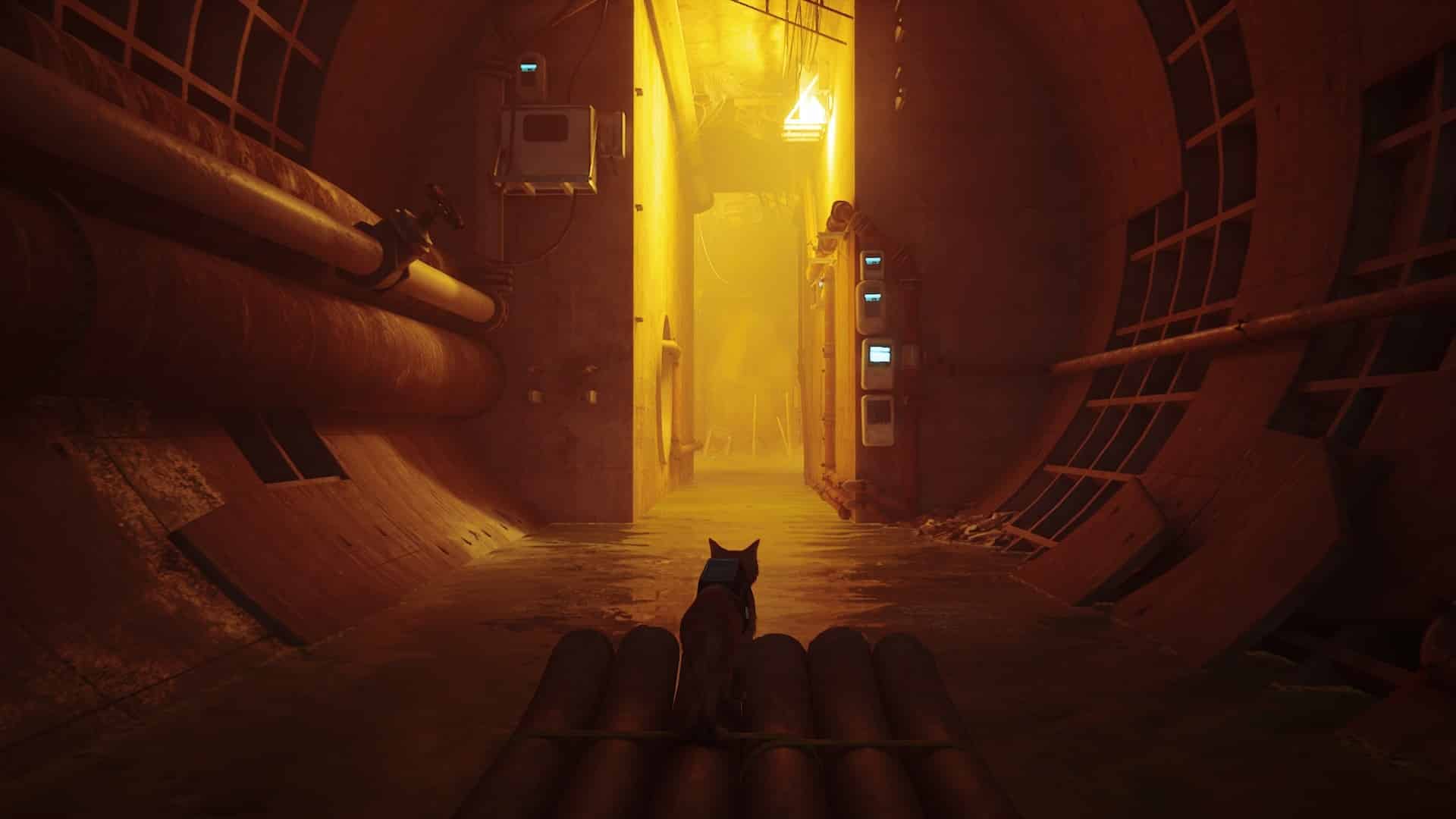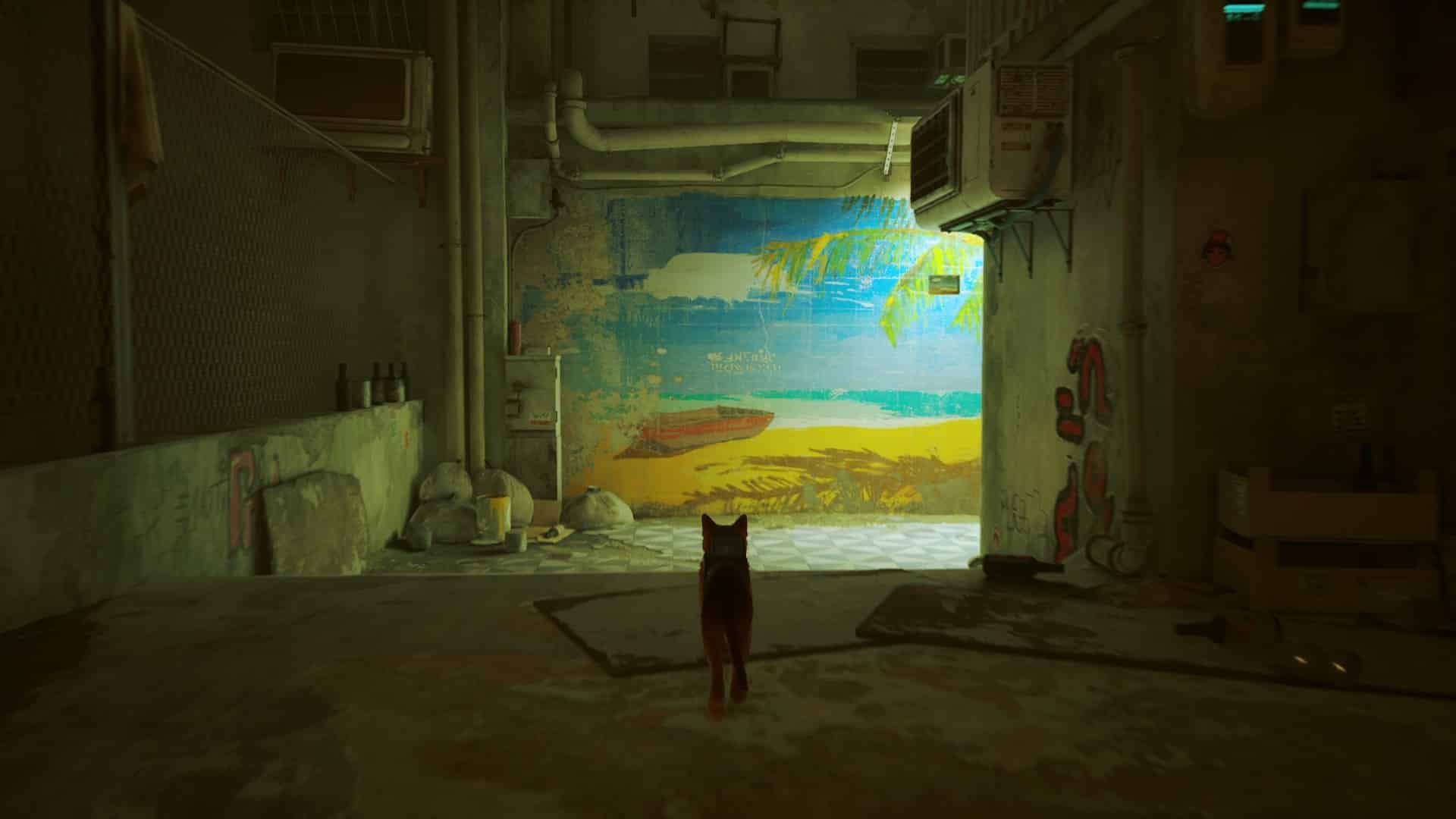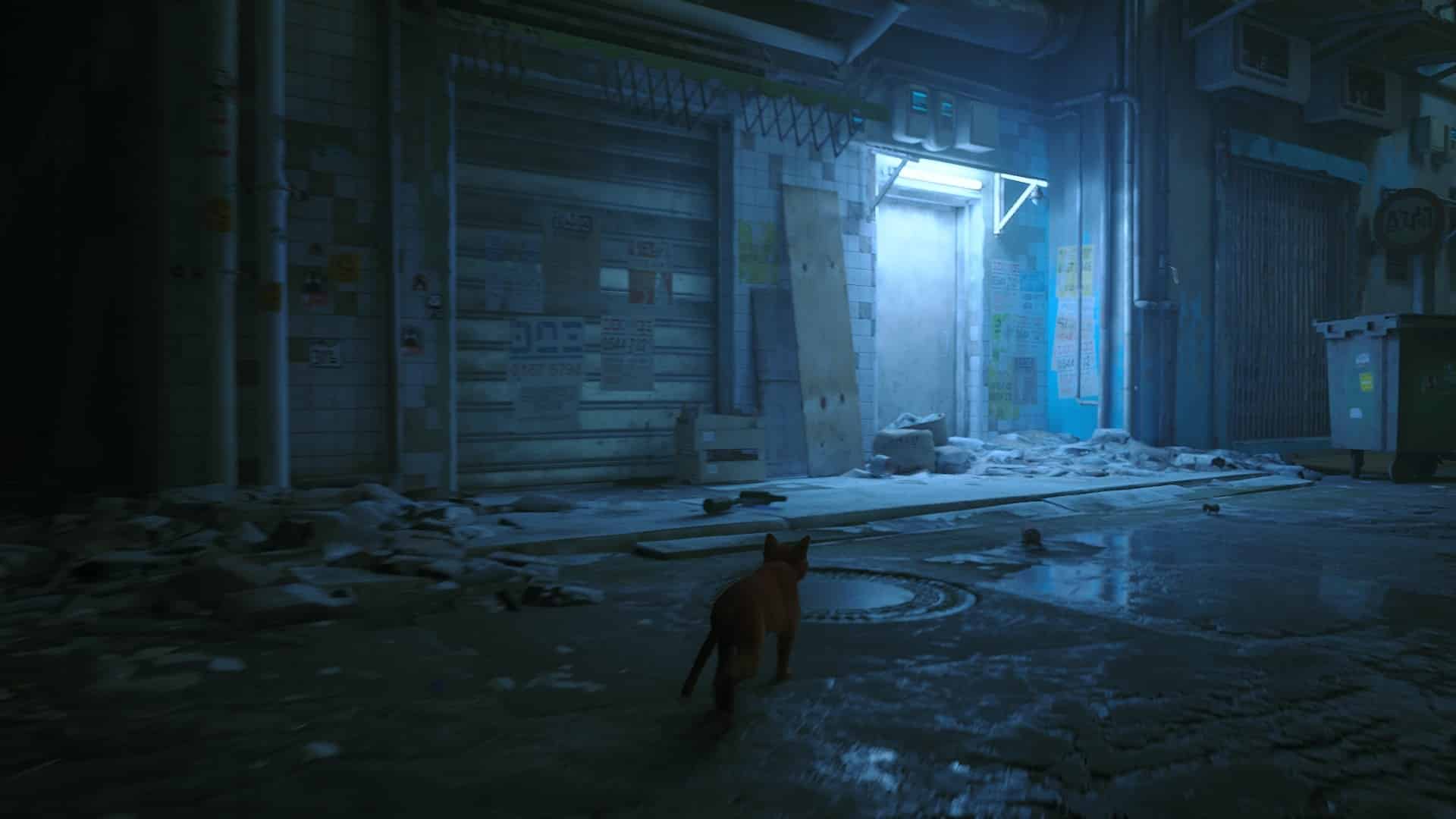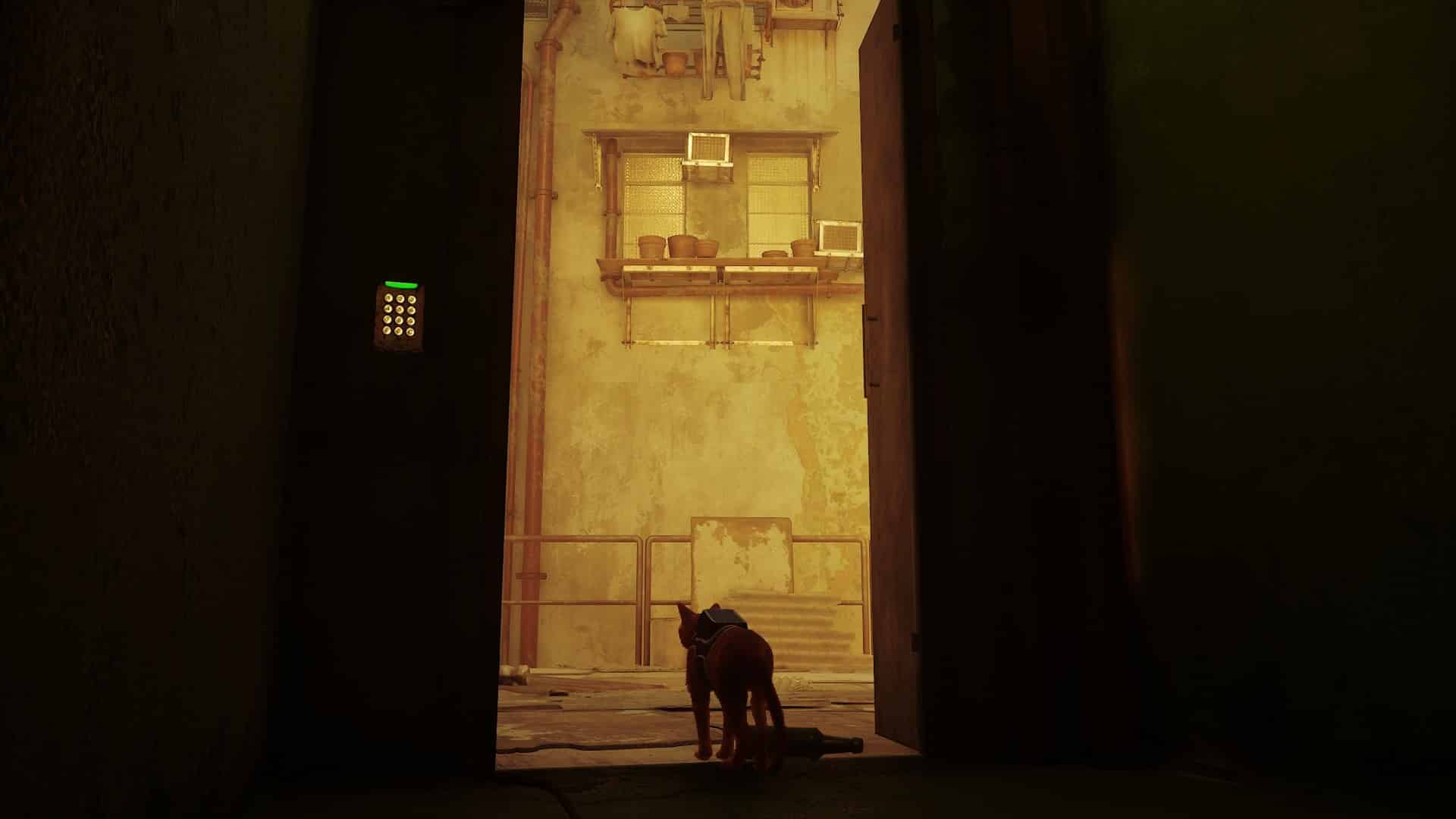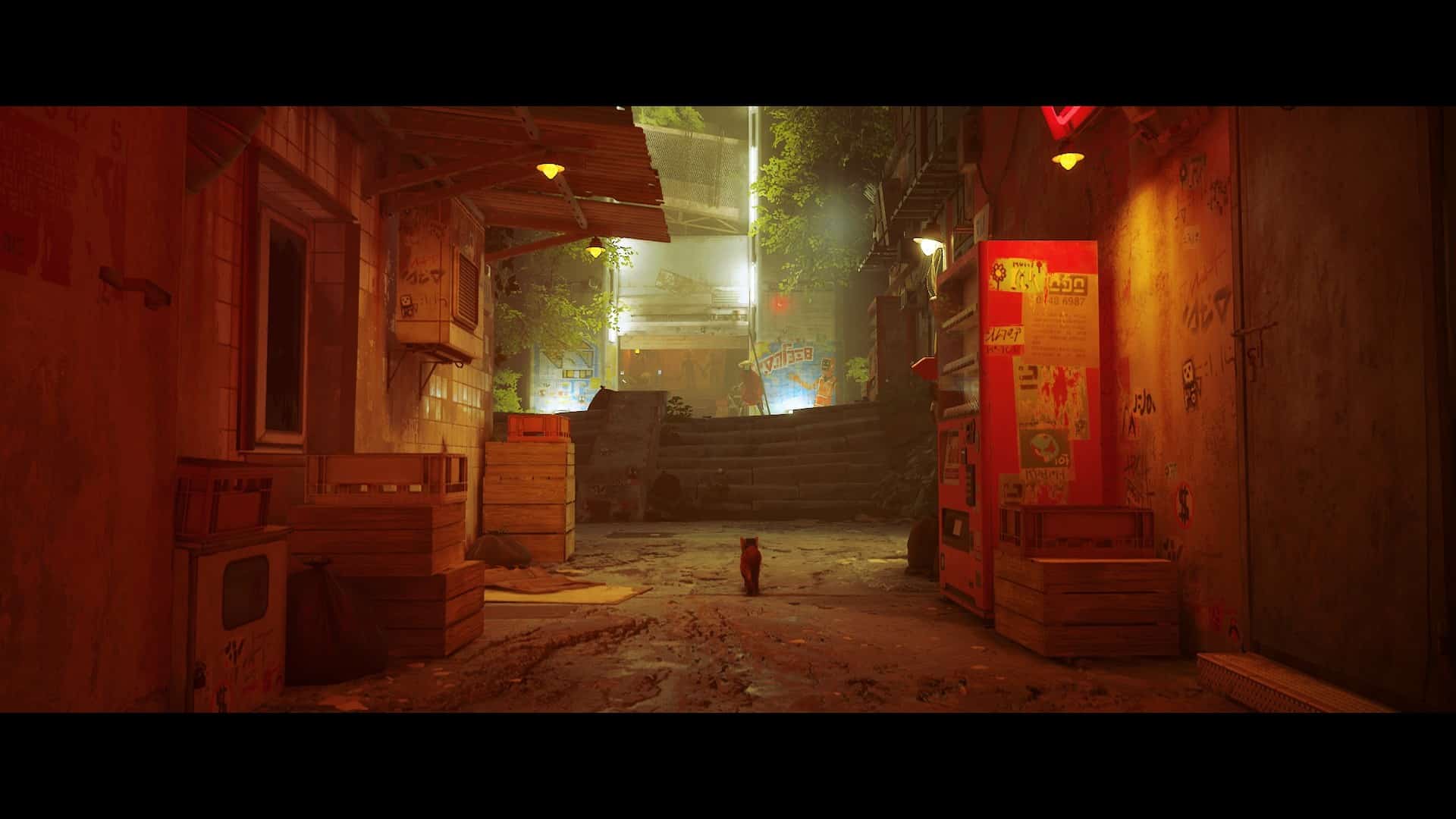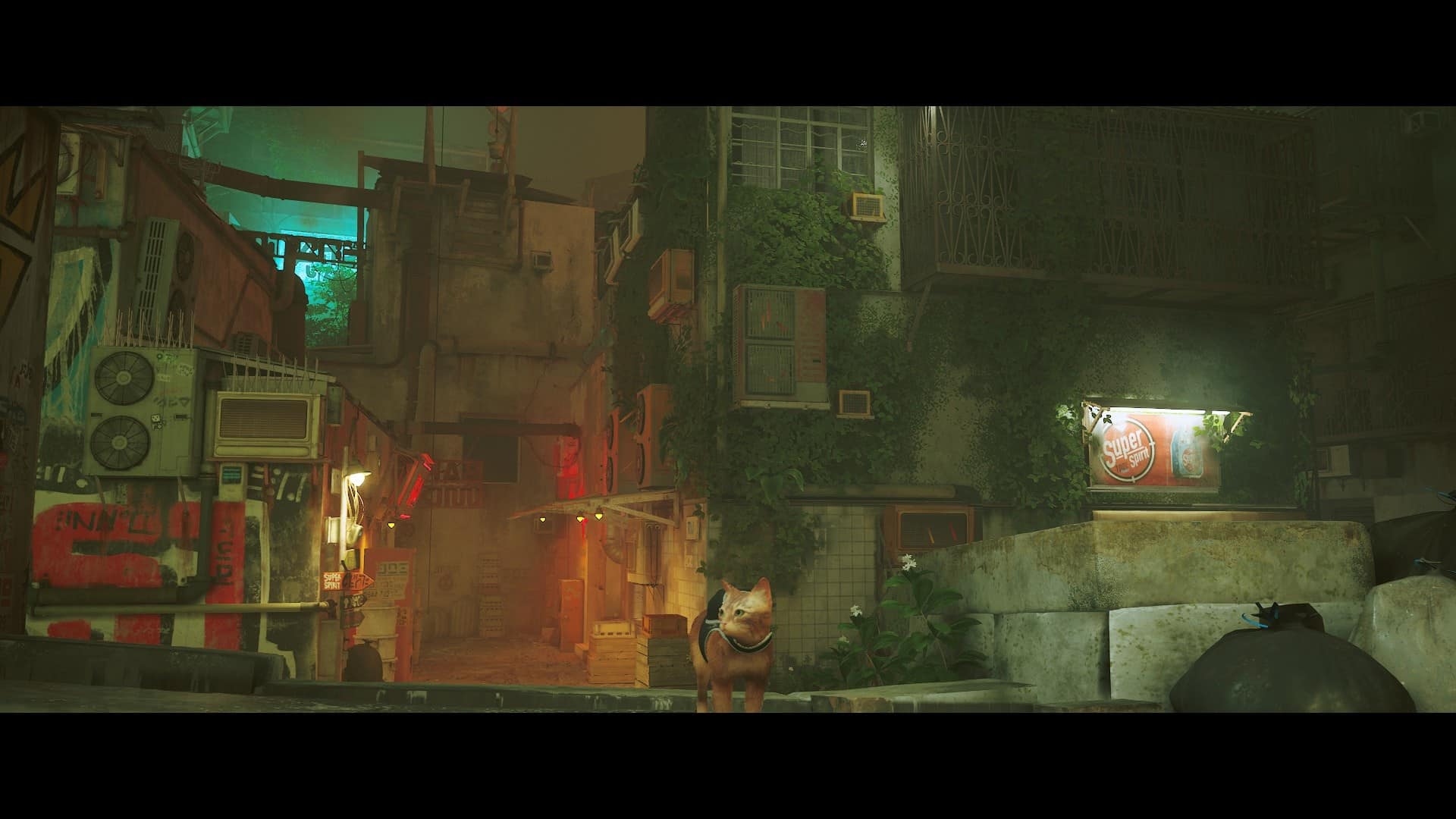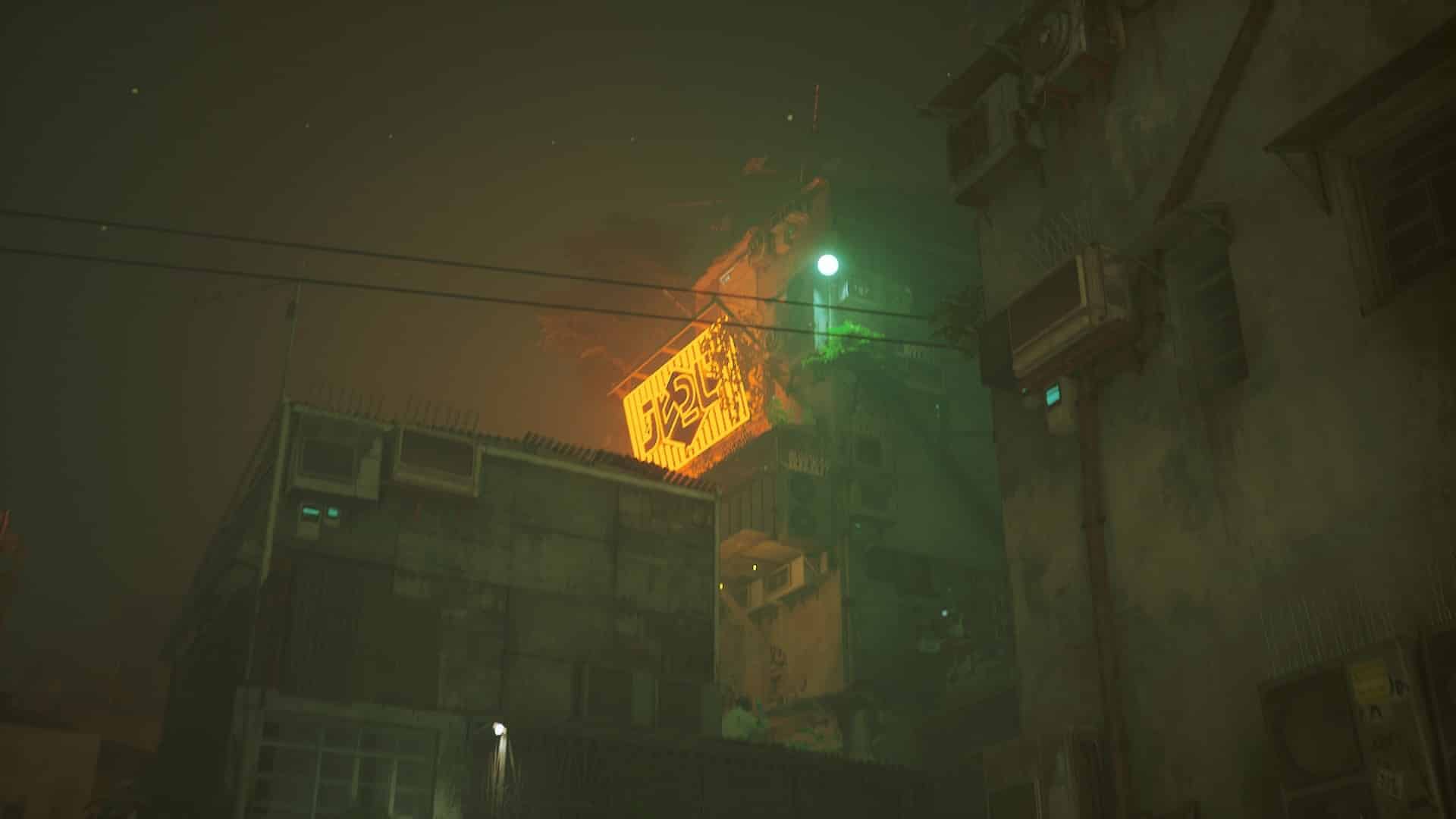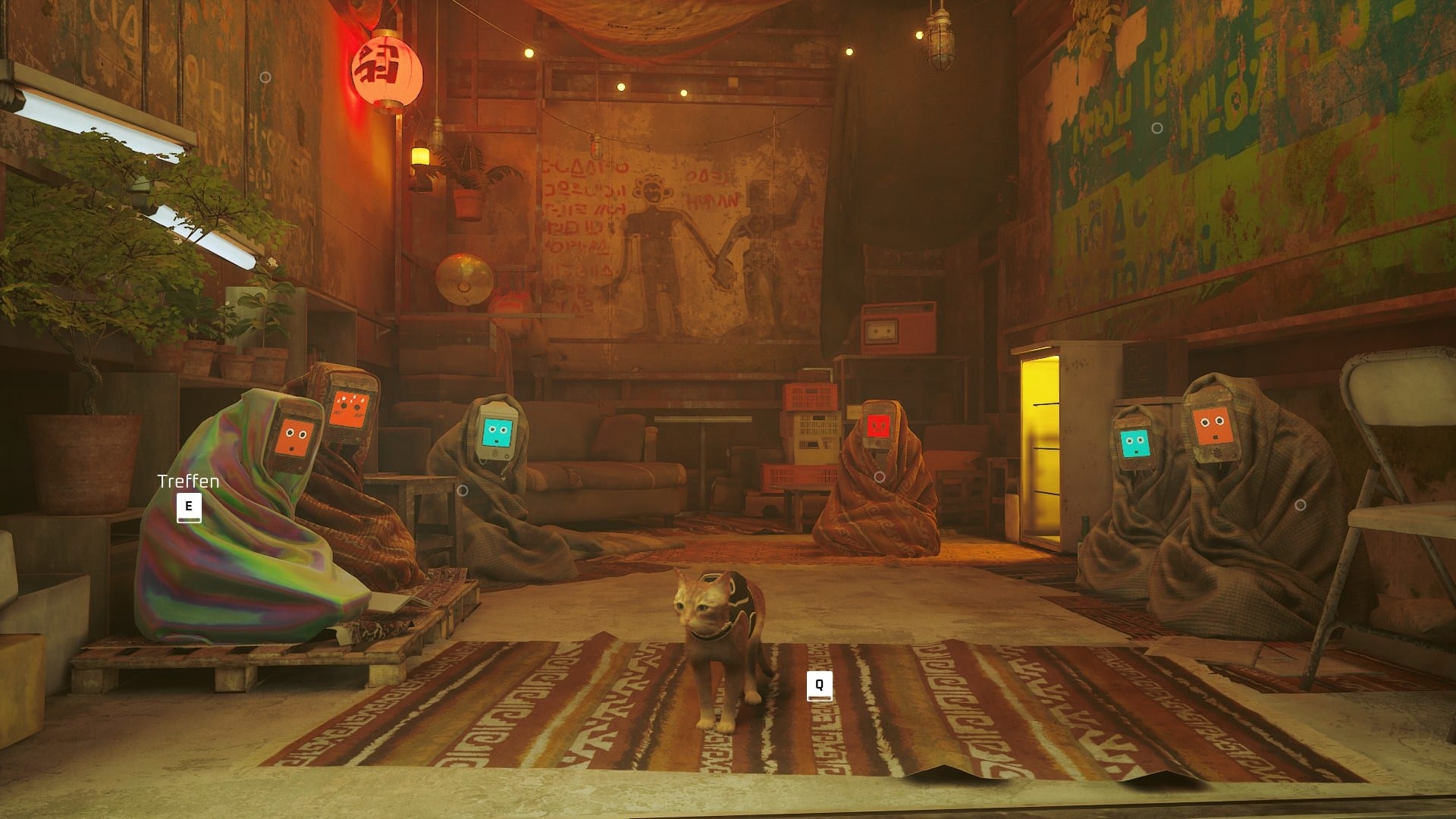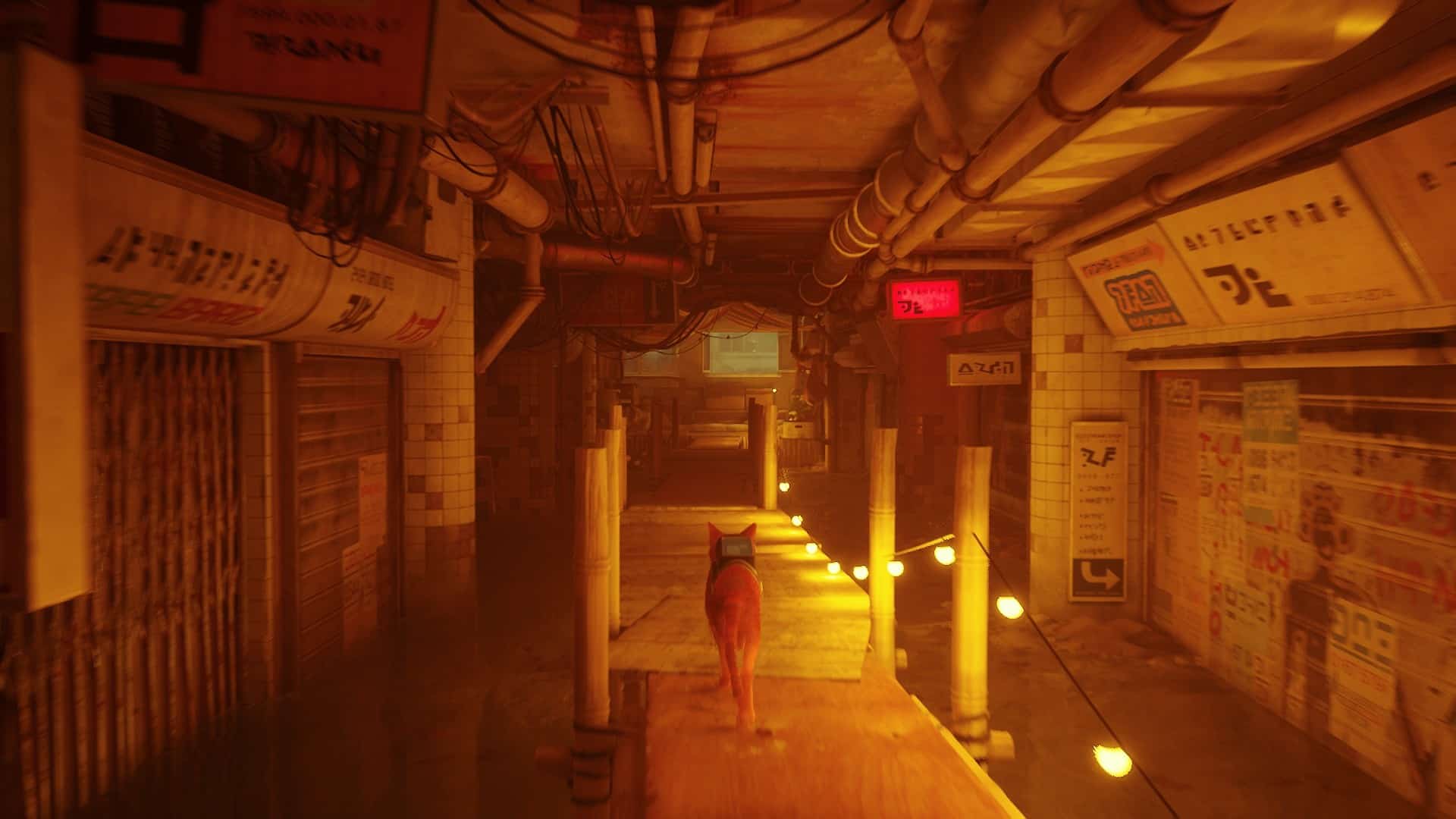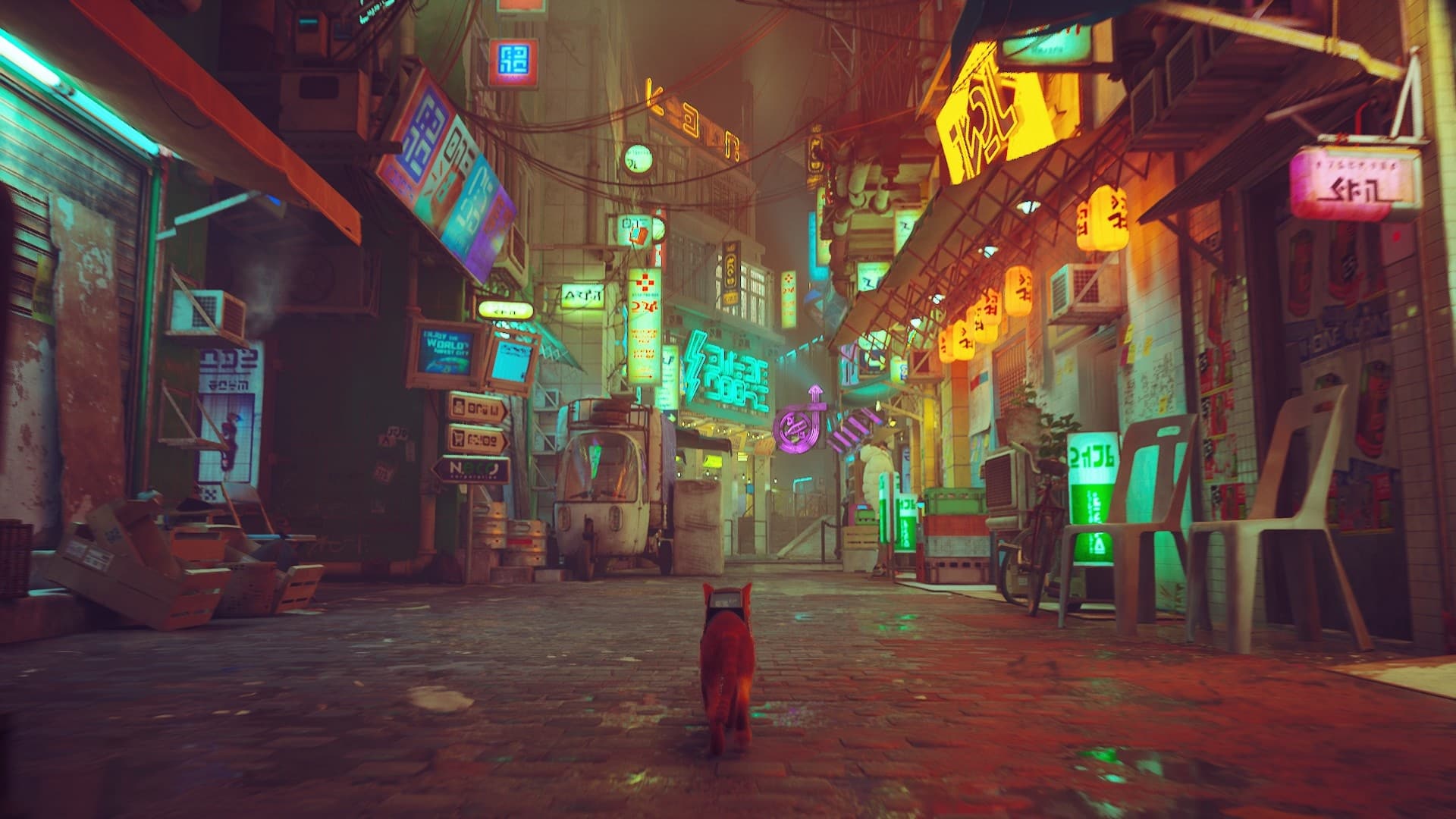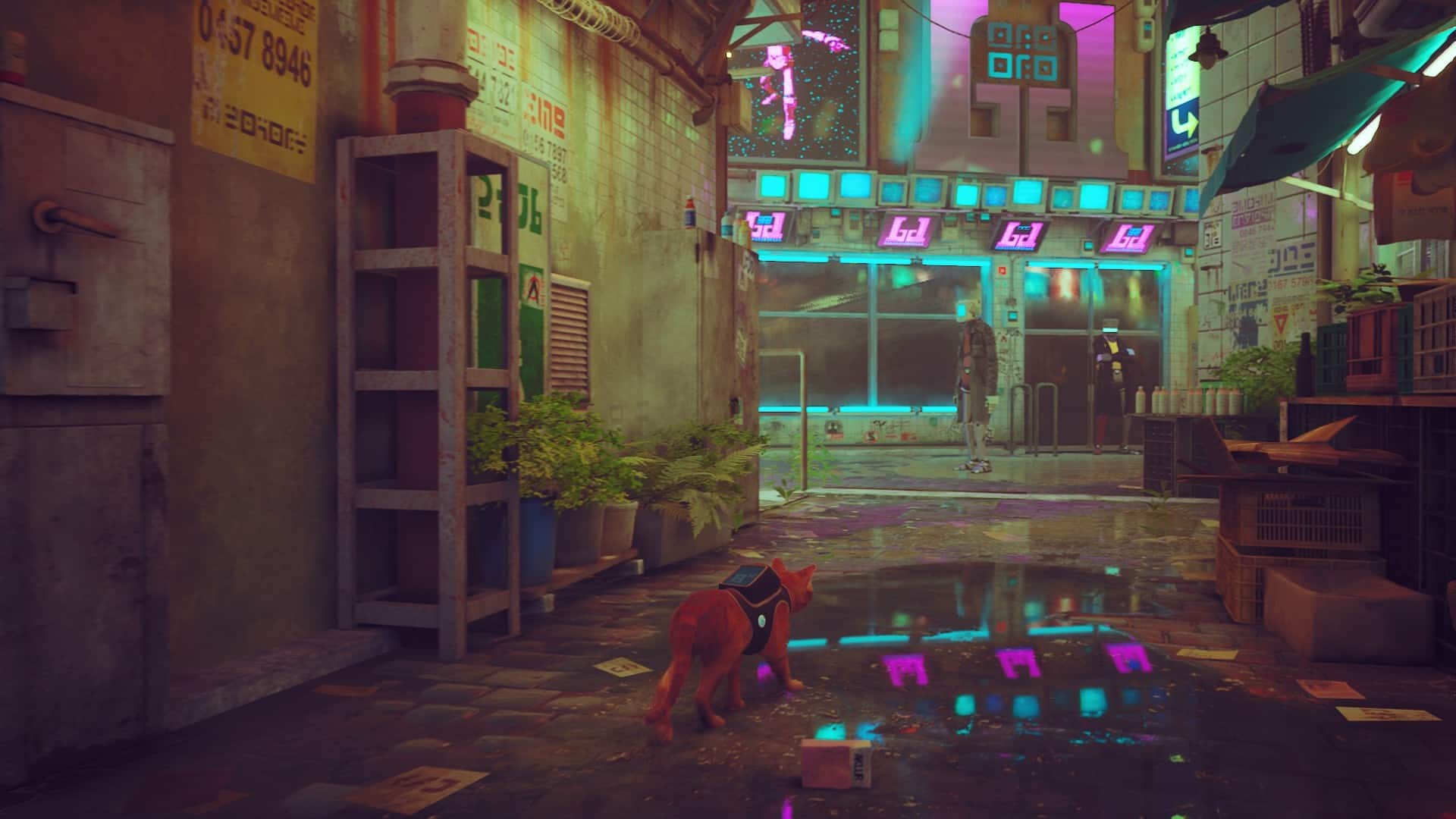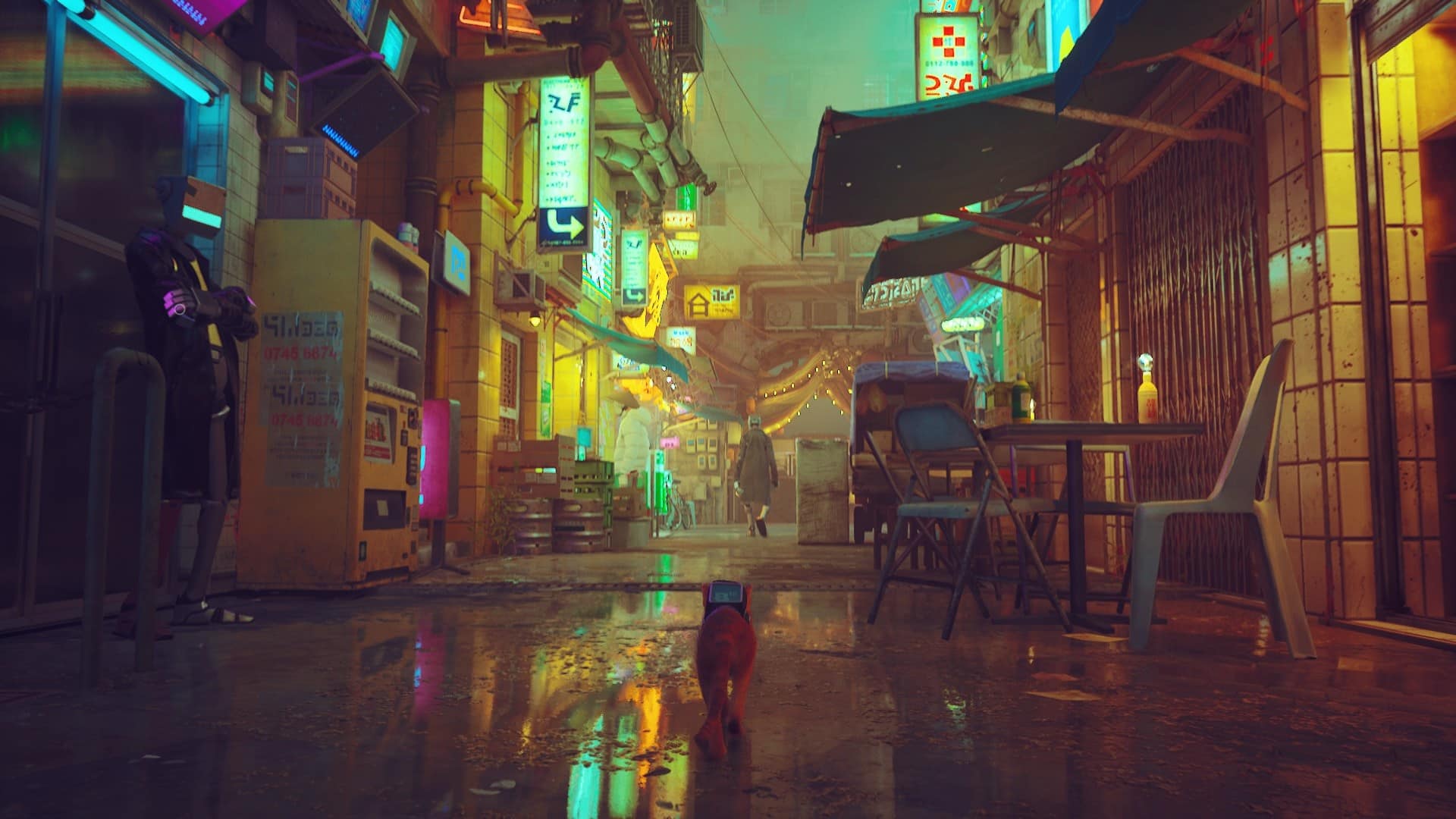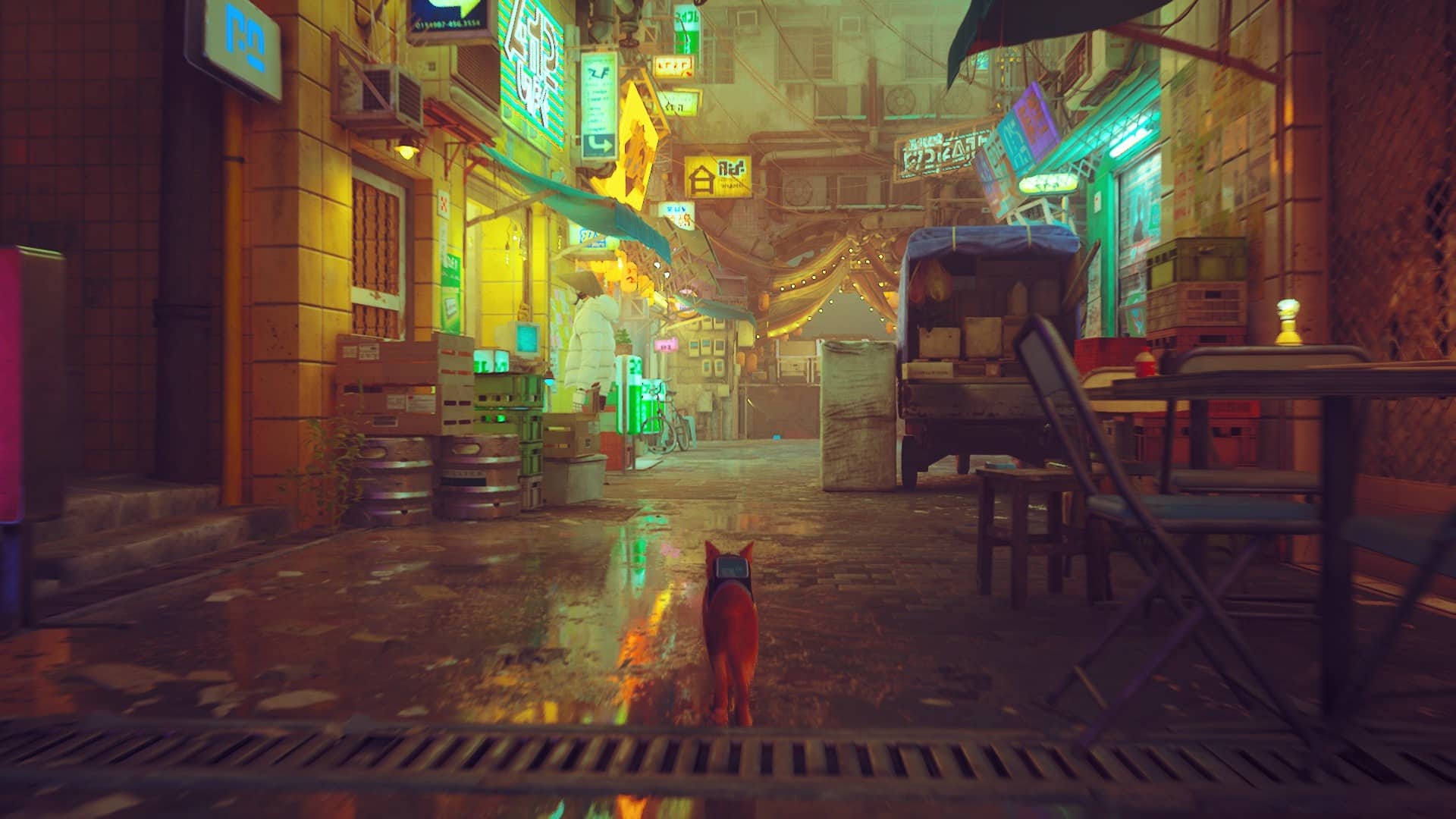The cyberpunk adventure Stray is the number one most anticipated game on Steam. We tell you in our review why the anticipation was absolutely justified.
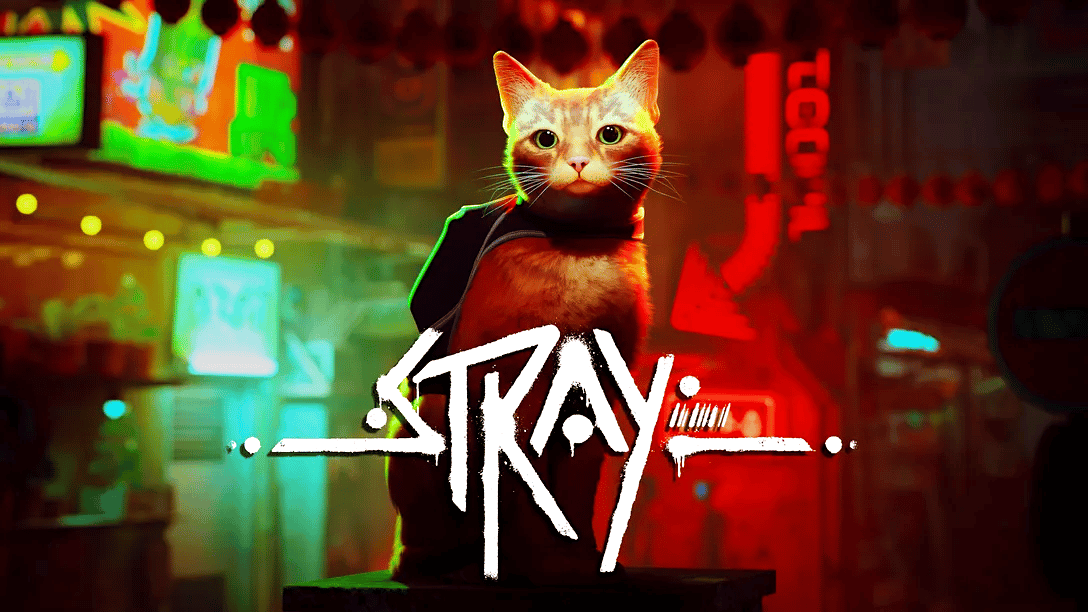
I”ll start this test with a controversial confession: I don”t find cats particularly exciting on their own. This might be fueled by the fact that I”m allergic. I know, I know, people are pillorying me and throwing cat hair at me!
I don”t want to claim that my heart doesn”t swell when a really nice cat licks my knee with its rough tongue. Then I”m always happy to ignore my itchy eyes and gradually closing airways. But cats alone are just not a selling point for me. Still, I couldn”t wait for the release of Stray !
And I guess I wasn”t the only one: Stray was number 1 on Steam”s worldwide wishlists before its release. Even ahead of survival hopeful The Day Before, Bethesda”s new role-playing game Starfield or the hotly anticipated Stalker 2. Let that melt in your rough cat tongue
And now the good news: The anticipation was justified! Stray is (whether you comment on cats with a joyful squeal or a bored shrug of the shoulders) a fantastic adventure game, dripping with atmosphere – if you can overlook some minor problems. Because Stray creates a cyberpunk world that I haven”t experienced before.
Table of Contents
What is Stray about?
If all my cat talk hasn”t made it clear yet: In Stray, I don”t play a swashbuckling world saviour or dashing villain – I play, quite simply, a cat. A fluffy red-haired cat who gets separated from his animal family at the beginning of the story and finds himself in a dark world.
And without words (I am a cat, after all) a realisation quickly forms: something terrible must have happened to humanity. In the “underworld” where I land after a dramatic fall, there are no other living beings but me. The world is populated by robots, who at first even meet me with mortal fear, as they have never seen anything like me before.
Rumours circulate about the “upper world” we come from, but most dismiss it as an urban legend. Only a few robots dream of a better life and wallpaper their flats with pictures of blue beaches. My goal: to find my way back to the surface. Quite simple really, if I didn”t get the feeling more and more that something is very wrong here … Without giving too much away at this point, but Stray takes a turn at some point that I didn”t expect at all.
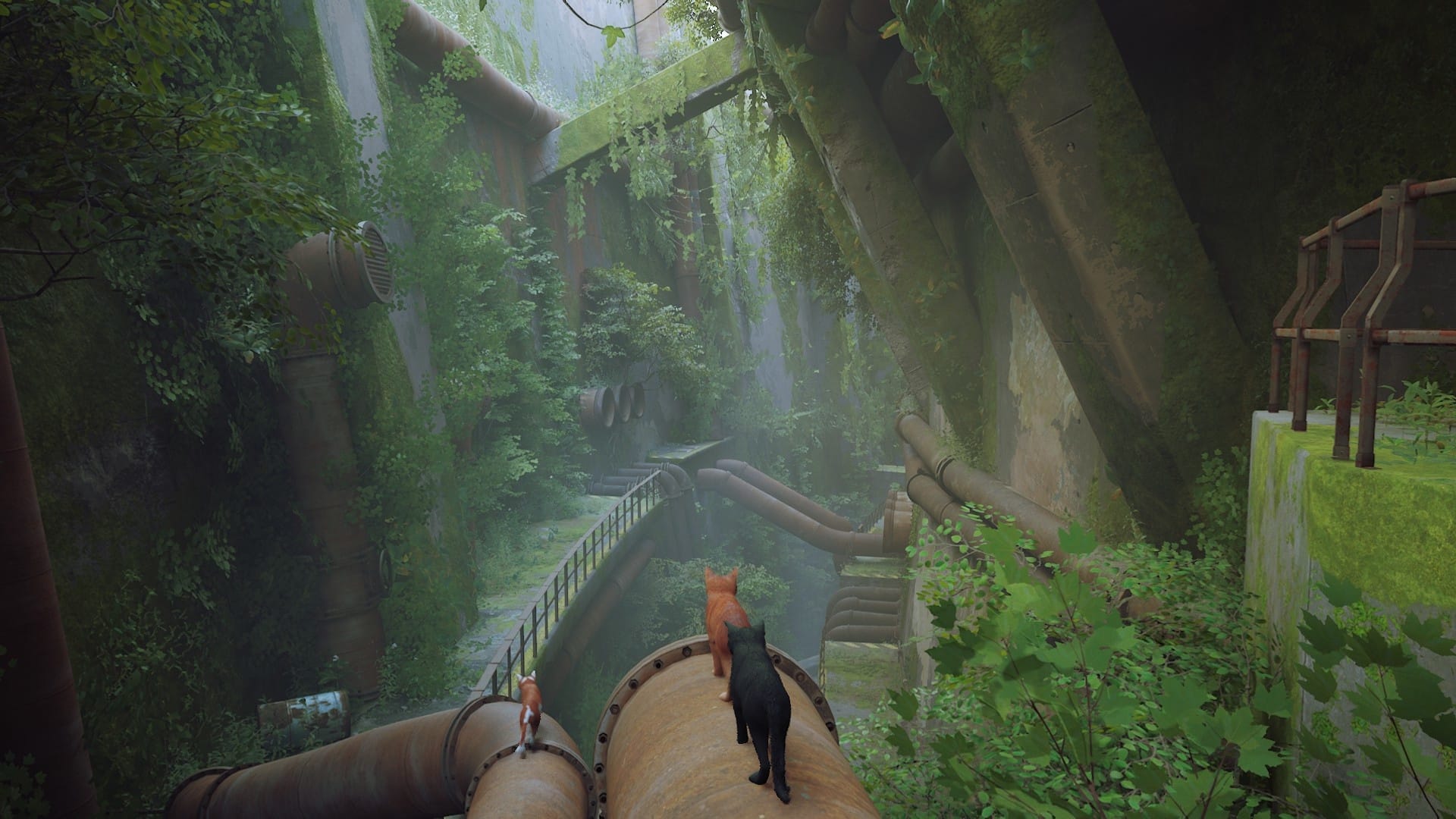
How does Stray play?
I don”t know if you knew, but cats generally have very limited computer skills. They also have limited ability to communicate (if you ignore the dedicated and absolutely awesome meow button in Stray).
Fortunately, there is someone who can make up for this deficit for me: The drone B-12, whom I meet at the beginning of my journey and who desperately tries to remember her mission. In future, B-12 takes on the role of interpreter and tells me what robots want to tell me or translates signs and texts for me – which, as an atmospheric detail, are written in cryptic letters so that I perceive them as if through the eyes of a cat that has no idea how to read. The lack of voice-over here also seems almost intentional – as we only hear robots comfortably whirring, beeping and babbling. Besides, B-12 can hack doors and transport objects for me.
My greatest strength, on the other hand, is to climb and jump through cities as nimbly as a cat … well, er, as nimbly as myself. However, you don”t have to fear any tricky jump & run passages. Because every jump here is spot on. As soon as I can jump to a level above, below or next to me, this is visualised with a discreet button display (which I can optionally turn off). I can”t fall down – this creates a wonderful flow of play as I smoothly descend between canyons of buildings, climb into windows or scale the skyline.
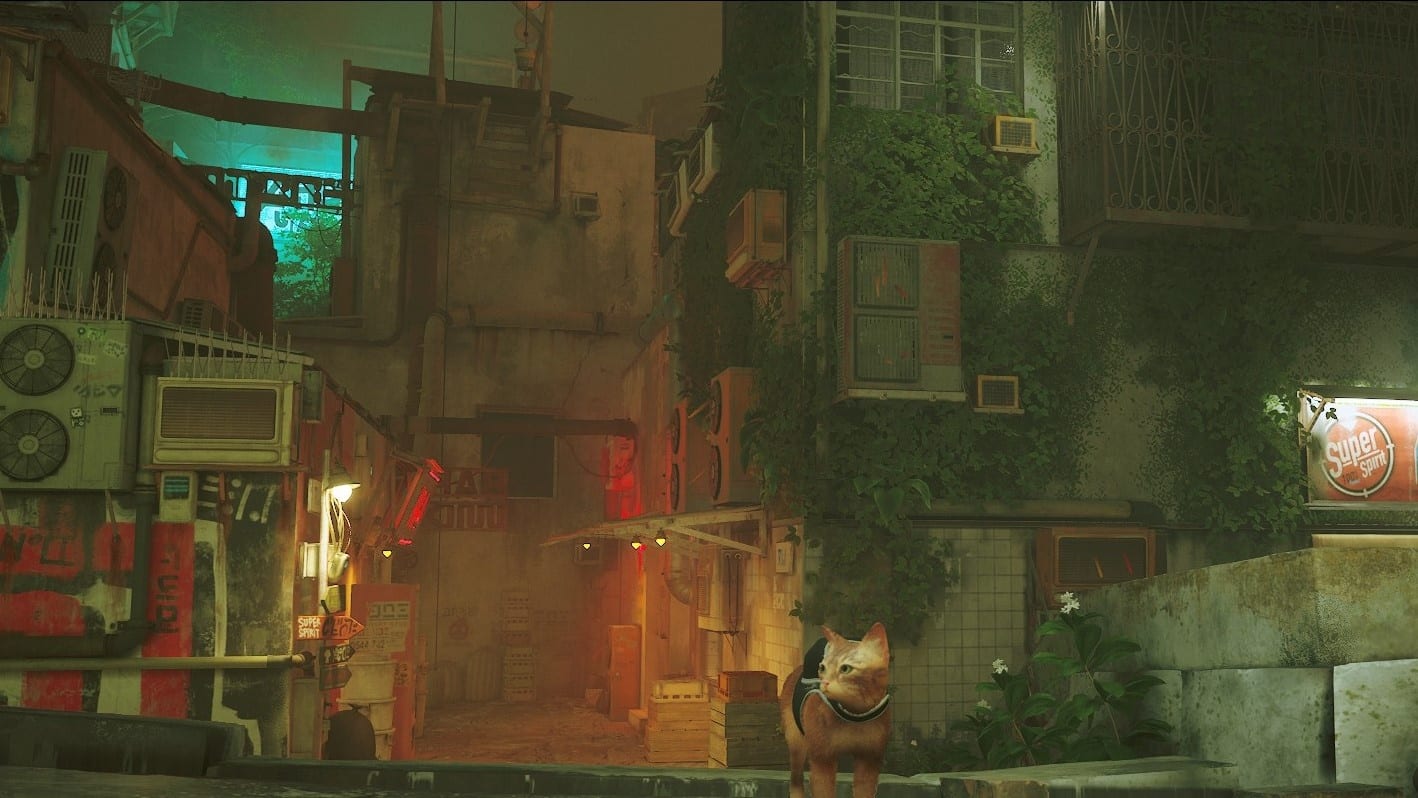
There are always several ways to my destination. Figuring these out is a big part of the fun of the game. At the same time, Stray has such clever level design that I never get seriously lost or fall victim to annoying backtracking, despite the lack of a map. Instead, I am subtly guided through the story and always somehow end up exactly where I need to be – without the levels turning out linear.
A world of activity
Stray doesn”t have an open world in the classic sense – however, in the course of the story I end up in two larger cities that I can explore freely and that are peppered with side tasks. For example, a robot who has lost his house keys somewhere in the factory or a musician for whom I can get sheet music. At a barter trader, you can also exchange found items for quest items or objects for side quests.
These quests fit organically into the world. The musician in question, for example, has scribbled his request for sheet music as graffiti on a house wall, explaining only that he lives “near the big lift”. A nice change from quest markers and minimaps. There are also unlockable “memories” that function as optional collectibles and reveal more about the fate of the humans and the world of the robots.
In addition to exploring the city, flats, bars, clubs and shops, there is also a puzzle or two waiting for me, which manages to make itself understood only through the surroundings and yet is pleasantly challenging from time to time (hey, I should know, as a game tester you can”t just look at a walkthrough).
The special thing: I can interact with the world like a typical cat and, for example, throw things off tables, knock over carefully piled stacks of books, run around on keyboards, scratch at doors or sit in boxes. Most of the time I do this for fun and to roleplay a bit in the world, but each of these mechanics sooner or later becomes part of a puzzle and so feels completely natural and realistic – because I”m doing it all the time anyway, not just as part of a single mechanic. Here”s a list of feline activities that the world of Stray allows me to do:
Amidst all the relaxed exploration, things sometimes get action-packed – such as in one of the wild chases that cleverly link new sections of the world together. Who is chasing me? The little creepy creatures called Zurks, who eat me as soon as they get their fleshy little fingers on me. These sections can sometimes take another try, but the reset points are so numerous that chase or sneak passages never become frustrating.
It could be different, however, if you explore the world on your own, away from the main story and quests – then a save point can be 15 minutes behind and there is unfortunately no manual saving.
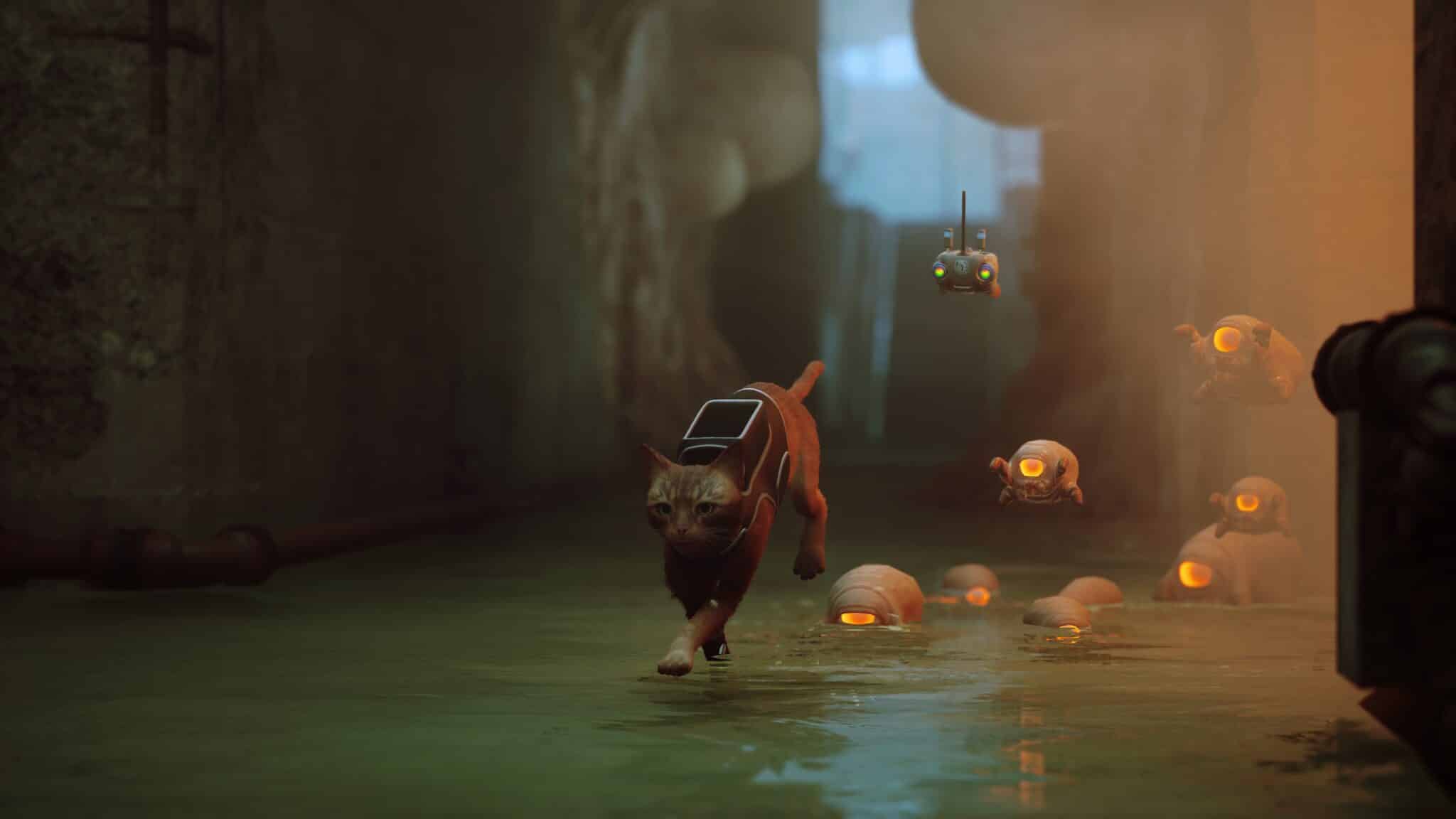
How about technology and control?
Stray recommends controller control and I agree with the recommendation. Stray is also playable with mouse and keyboard, but especially when it comes to climbing, action and sneaking, a controller is simply more comfortable. Even if the assignment is not perfect here either. The key for switching through dialogues, for example, is different from my usual action key, and to end the dialogue requires another keystroke – even though I can”t perform any other actions during dialogues and a conversation would end anyway after all the dialogue lines have ended. A small thing, but one that can disturb the otherwise beautiful flow of the game.
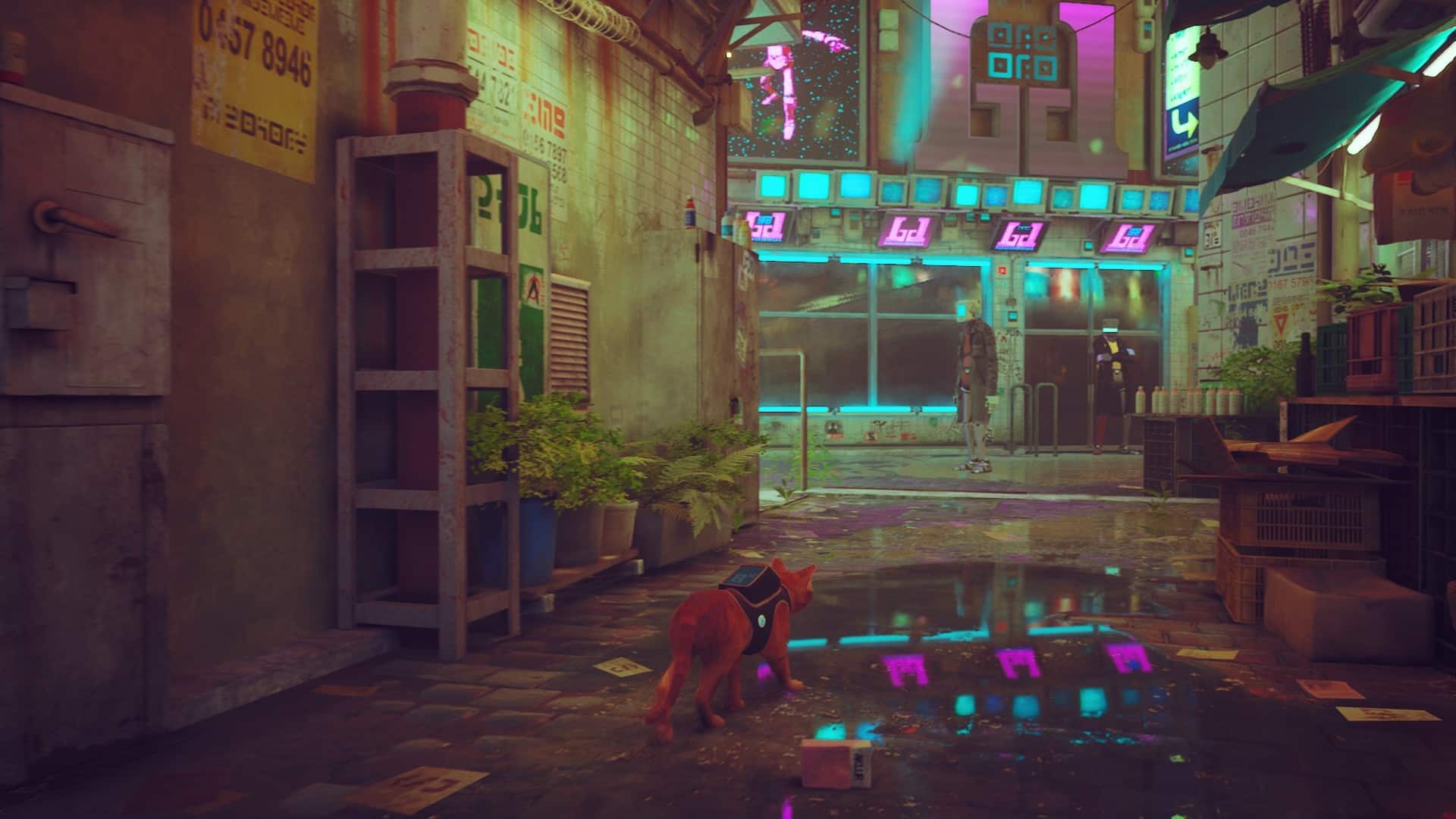
By the way, on the PS5 you benefit from the DualSense features when playing. Then, for example, there is haptic feedback when scratching or a purr from the controller. On the PC, of course, you have to do without this, but at least there is vibration feedback.
In terms of technology, the PC is in no way inferior to the PS5 – even on the highest graphics settings, everything runs smoothly in 60 frames per second and the lighting, models and animations are simply impressive for the debut work of a small studio like BlueTwelve. There are some minor clipping errors from time to time, but they can be tolerated.
Cyberpunk atmosphere to fall in love with
But let”s get to Stray”s greatest strength by far: the fabulous atmosphere. Heavens, I”ve rarely seen such a dirty yet warm and inviting cyberpunk world. Just look at all the screenshots I had to take urgently, because every scene in Stray could be a wallpaper:
Inspired by Hong Kong, with its skyscrapers, neon signs, restaurants, industrial charm and rooftop clotheslines, the world of Stray is a beautiful place. At the same time, I have rarely experienced a game that celebrates its rubbish so wonderfully. I constantly want to dive into dark alleys to look at the pretty rubbish bags, cardboard boxes and pieces of scrap metal. Fun Fact: At one point I meet a robot who has proudly created a new wall colour and named it “rubbish brown”. So I”m not the only one who appreciates the rubbish in Stray.
The robots all have more or less the same model, but are so grandly characterised by different clothes, accessories and strong personalities that I still recognise each of them immediately. The robot lady who calls herself “Grandma” and knits warm clothes for all the inhabitants. The hippie musician who has upgraded his wires to a sweeping hairstyle. The outsider who dreams of the “outside world” and prefers to wear colourful Hawaiian shirts.
Roles reversed
At every turn, I also realise that these robots are trying to mimic humans – they have adapted themselves to be able to eat food, they claim to freeze when it”s cold and they love to pet my feline hero. All of this gives me a heartwarming, yet creepy feeling at the same time.
I, on the other hand, as a human being, eventually start to become fully absorbed in my role as a cat. I see the world around me with completely different eyes. Doors are useless if no one opens them for me, ladders begin to lose their meaning and are little more than decoration. Instead, window ledges, pipes and canopies are my new best friends. I love to push things down, simply for the fun of it. I meow happily to myself. I drink from puddles.
But the cat whose role I play also feels just too alive. She is smoothly animated and if I don”t control her for a while, she starts grabbing things in the air or otherwise occupying herself. And although she doesn”t speak a single line of dialogue herself, her presence and actions give her more personality than many an articulate video game hero.
The story is told at just the right pace – it doesn”t rush through the chapters unnecessarily quickly, but there are no artificial lengths either. After 6 hours you may have already played through the main story, but it”s also worth taking about 10 hours for exploration and side quests. And in the end, I feel like every minute was worth it.
Stray is a well-rounded gaming experience with a gripping story, great graphics and unparalleled cyberpunk atmosphere that I had a fantastic time with. Even without allergy medication. And sometimes such a nicely tied, compact overall package is exactly what I need between huge AAA open worlds with 100 hours of gameplay.
Editor”s Verdict
Oh man. I”ll tell it like it is. On the one hand, it”s really good to see the end sequence of a game again. It”s become rare in the time of giant open-worlds. On the other hand, in Stray it almost hurts to leave the world again. Don”t get me wrong: the story is just the right length. But I wish I could live a little longer as a cat.
Stray has managed to make me see game worlds through completely new eyes. To perceive game mechanics not as game mechanics, but simply as things I do as a cat. And although Stray strictly speaking has no replay value, I”m currently thinking about just starting all over again. So that I can spend another few hours climbing through this unique cyberpunk city, illuminated by the neon lights and flickering screens of the robots that become my friends.
I feel so empty after finishing Stray, like I”ve just finished a multi-year role-playing series and now don”t know where to put myself. And yes, that”s a good thing.

